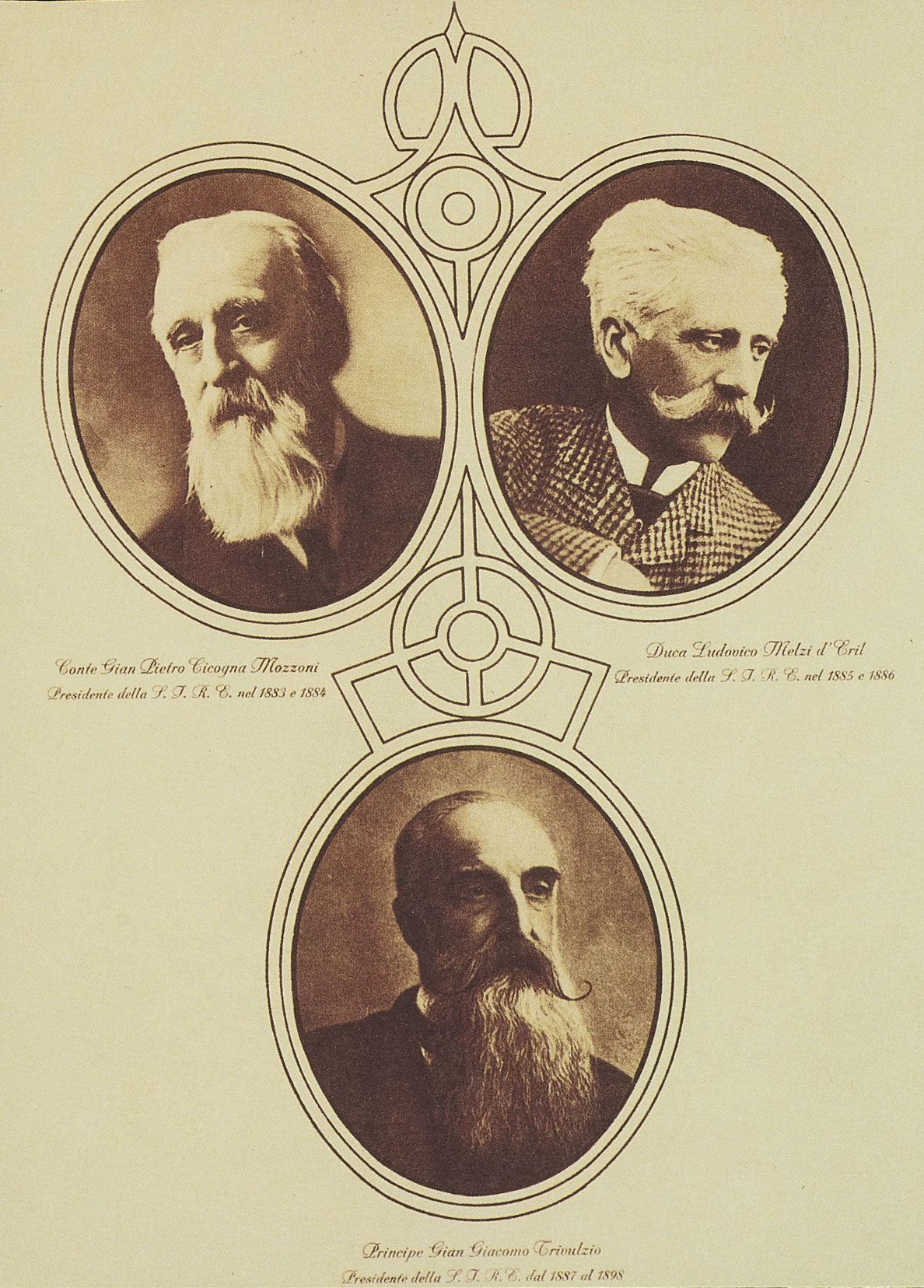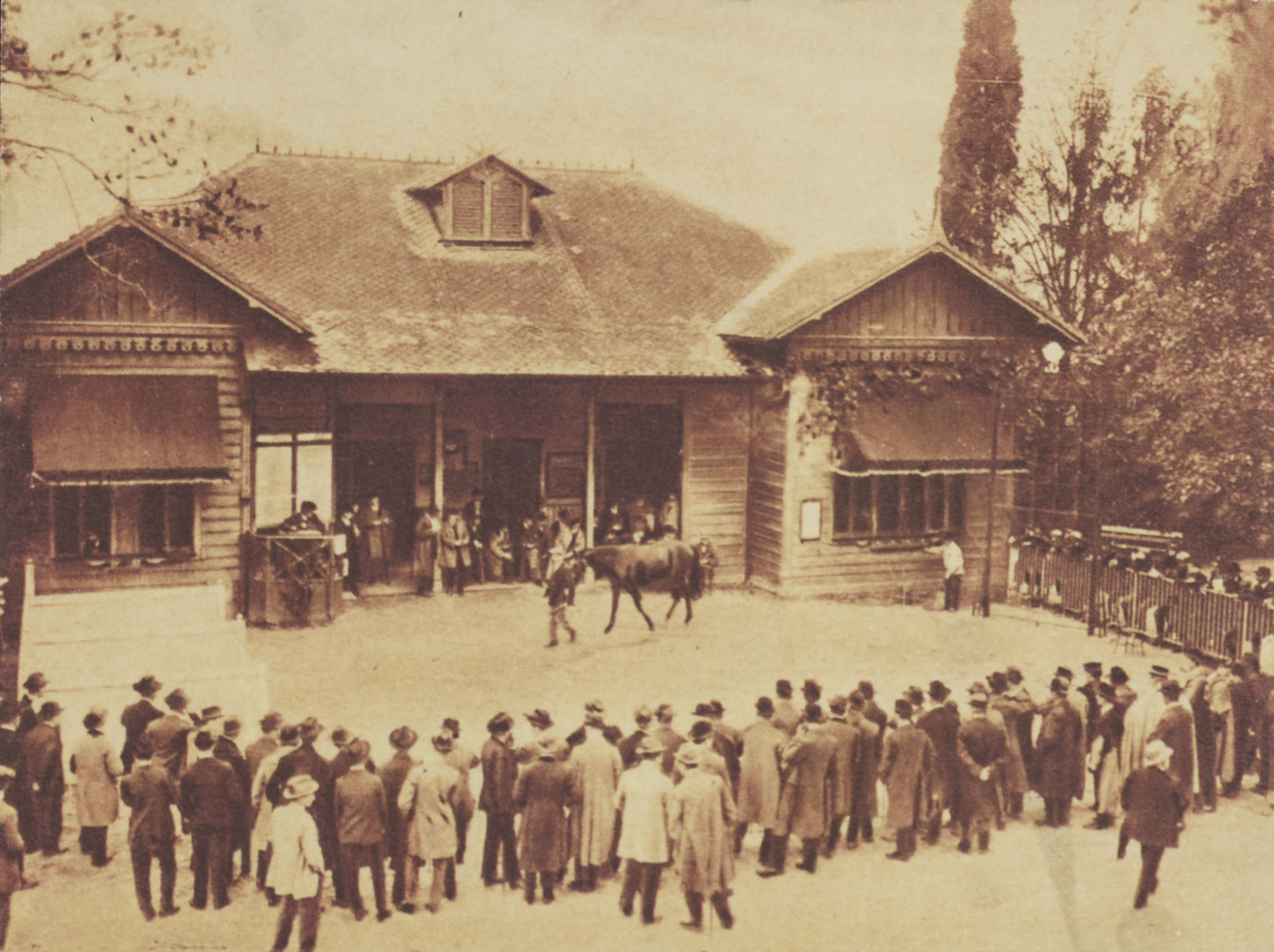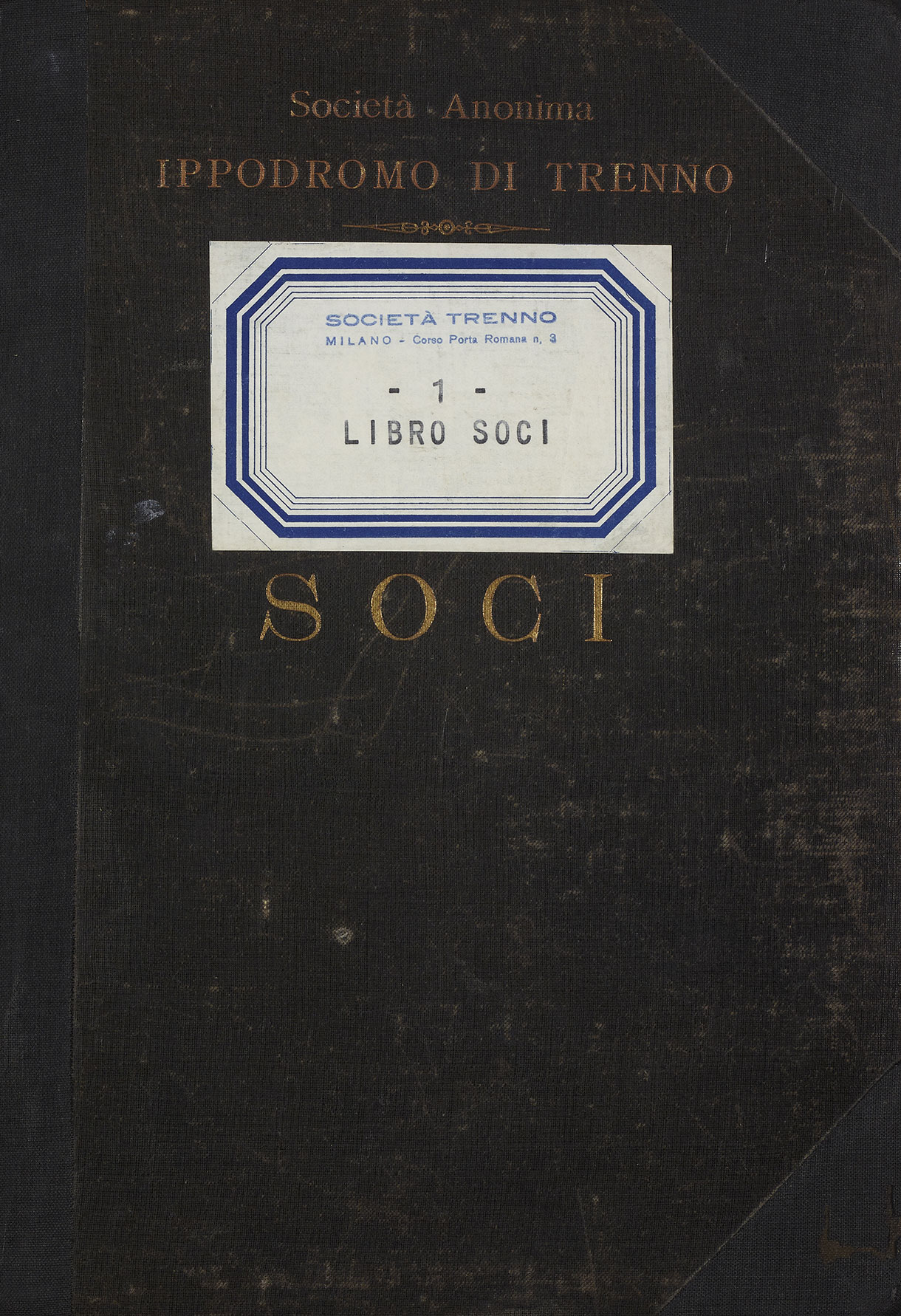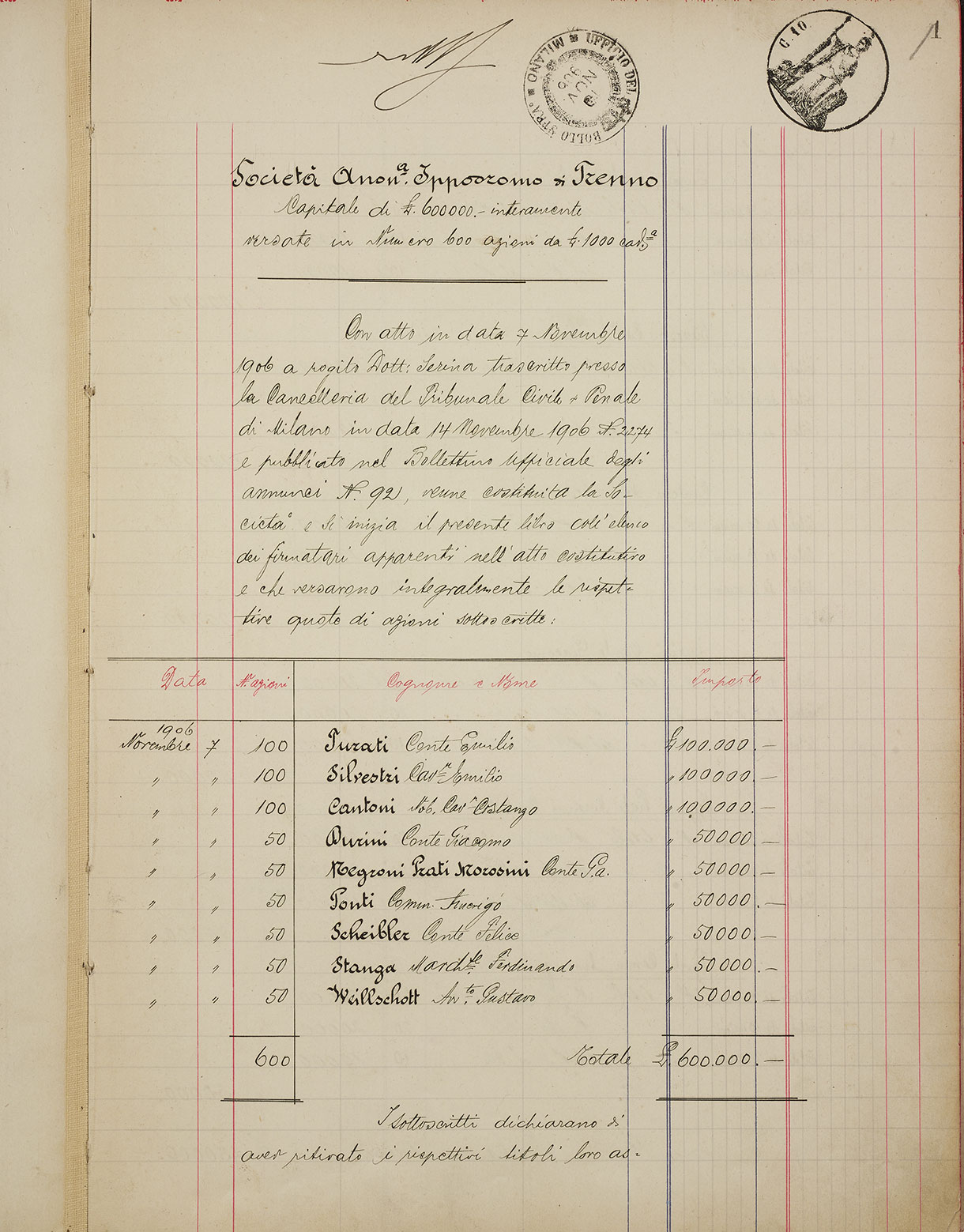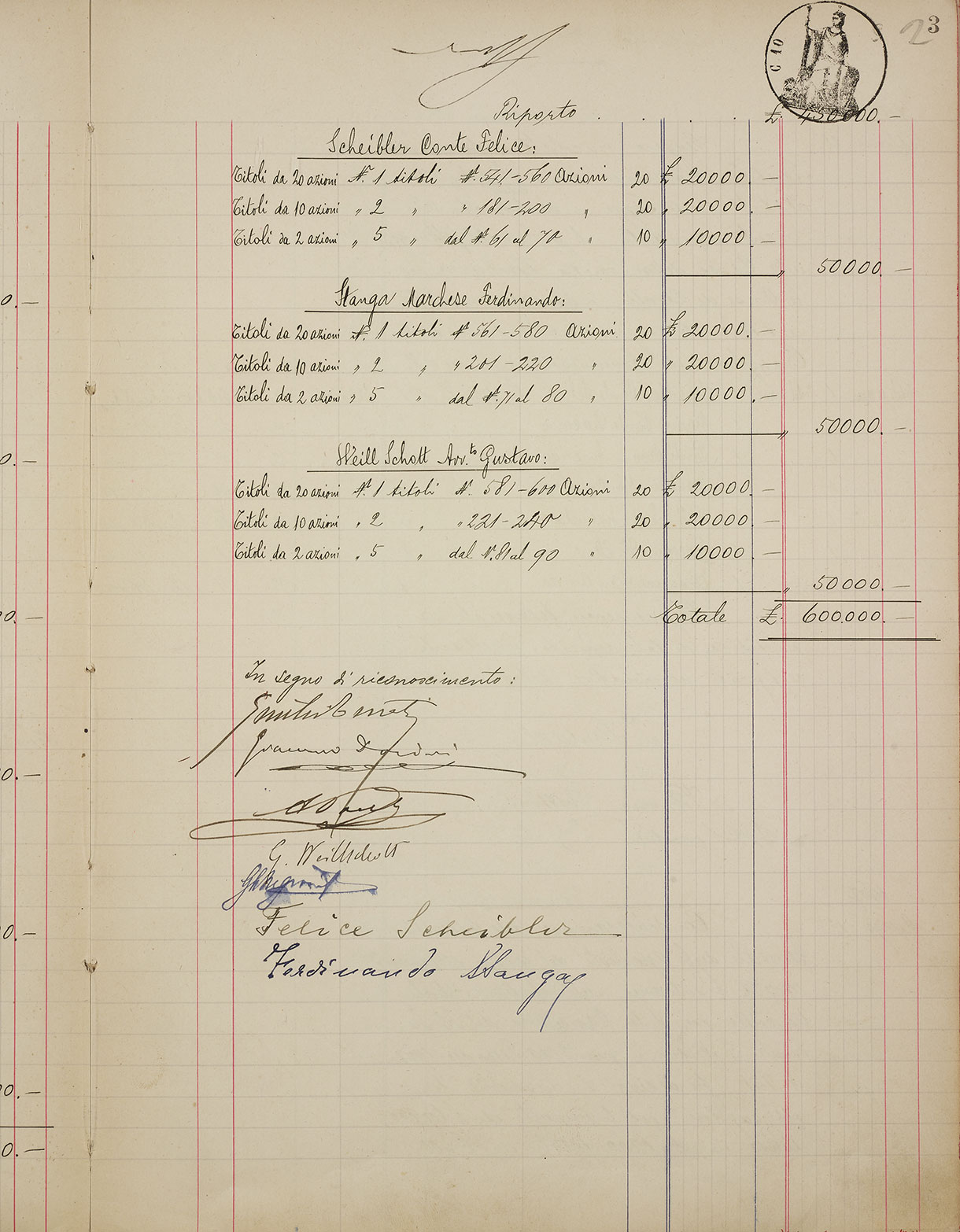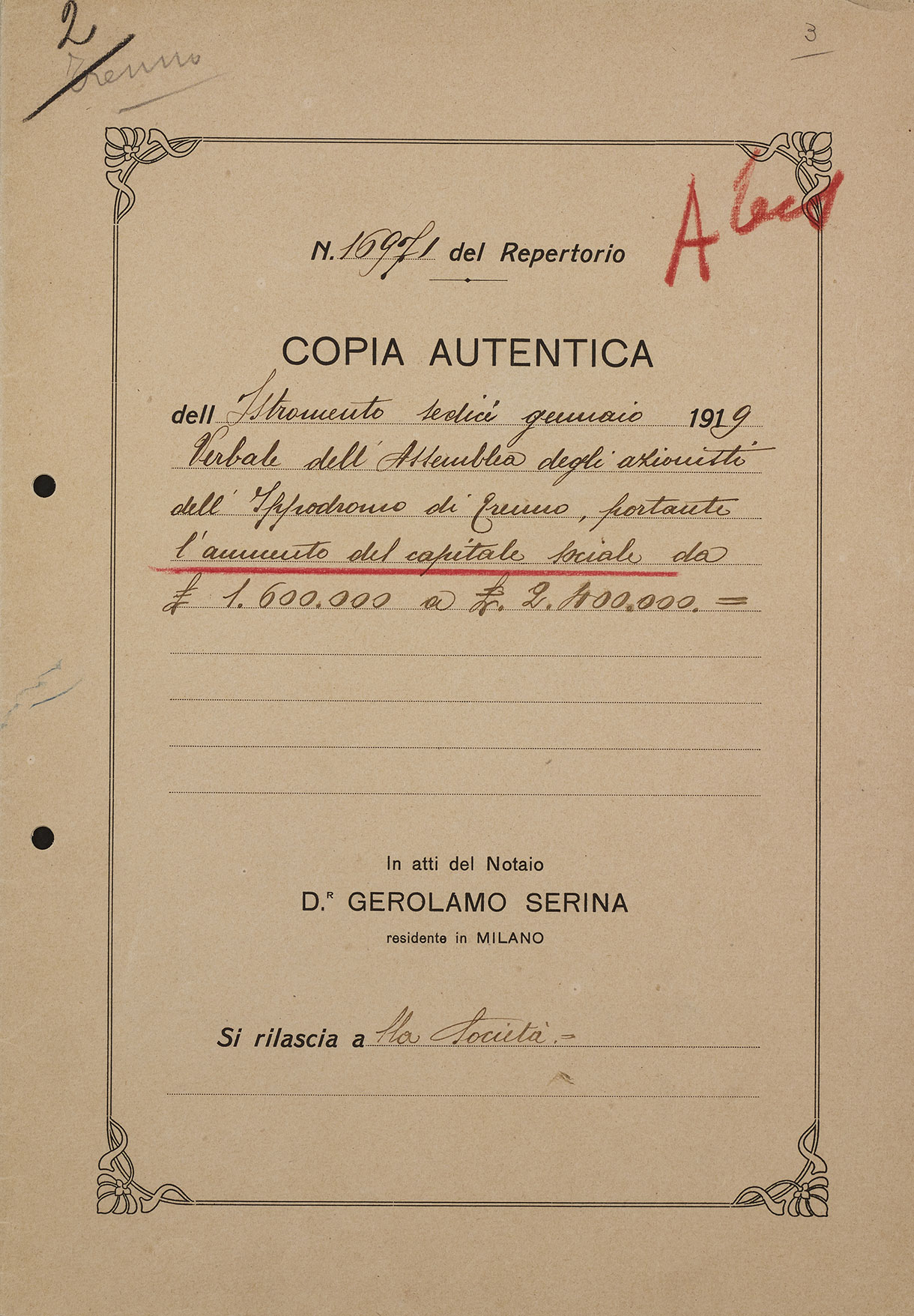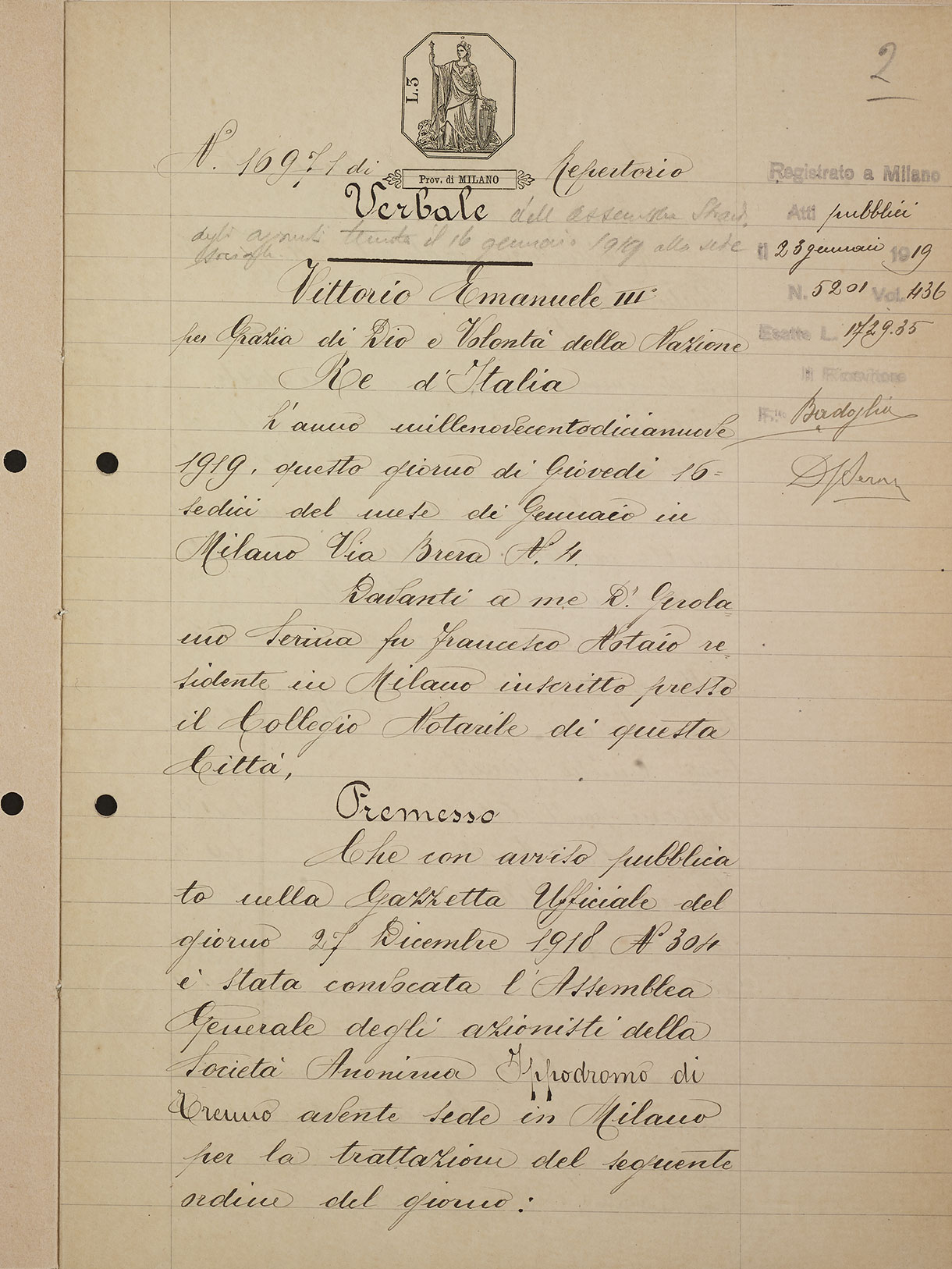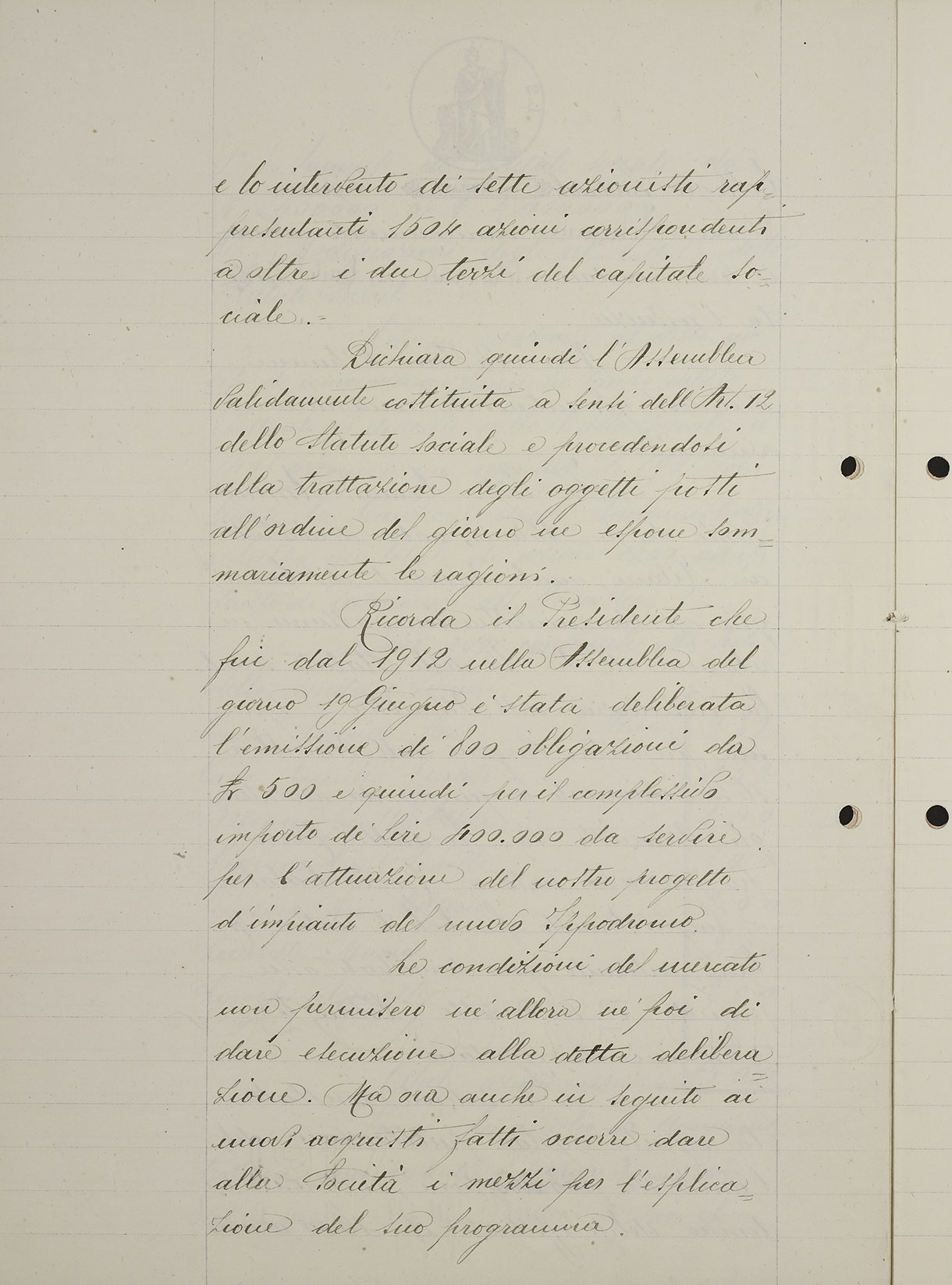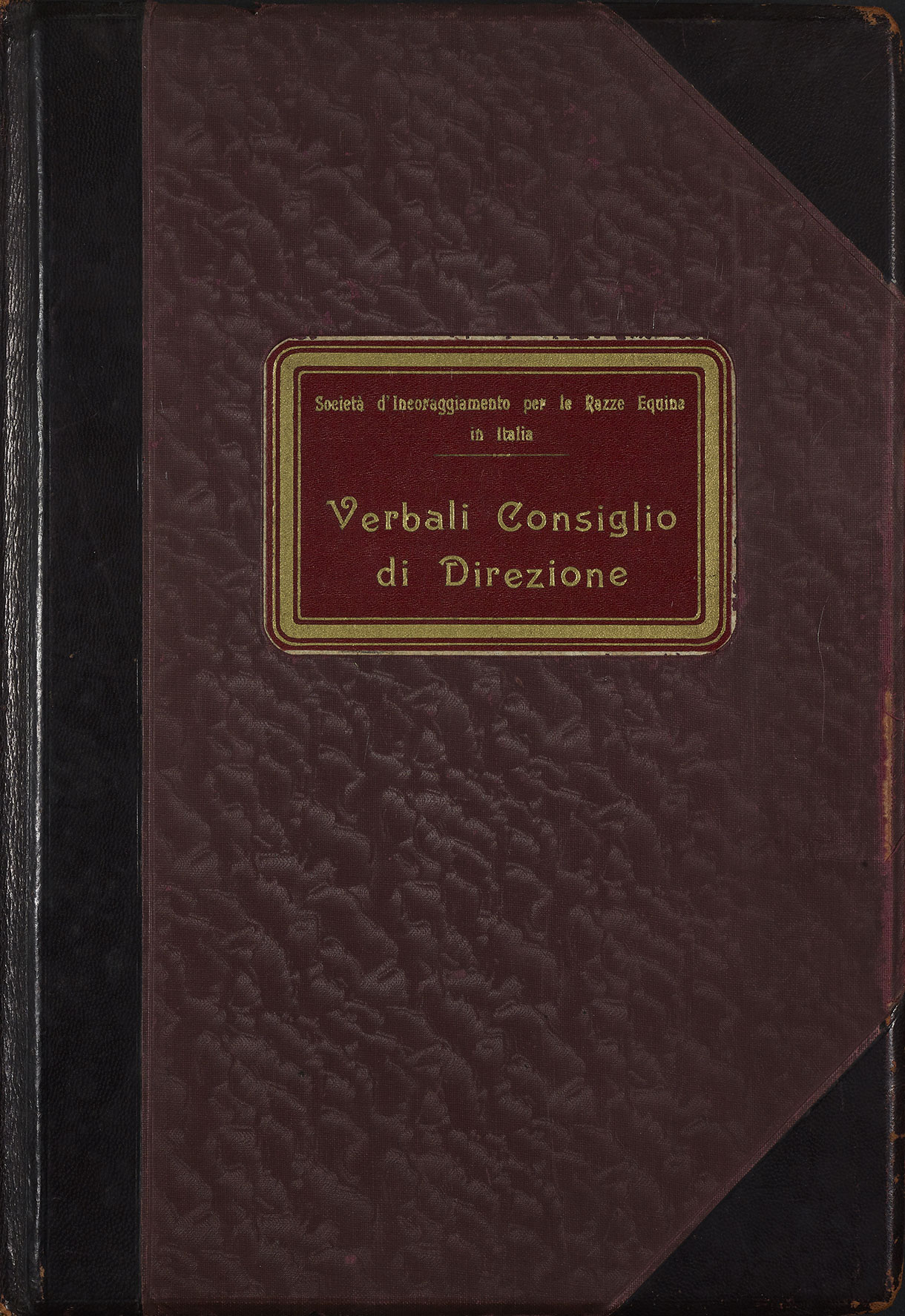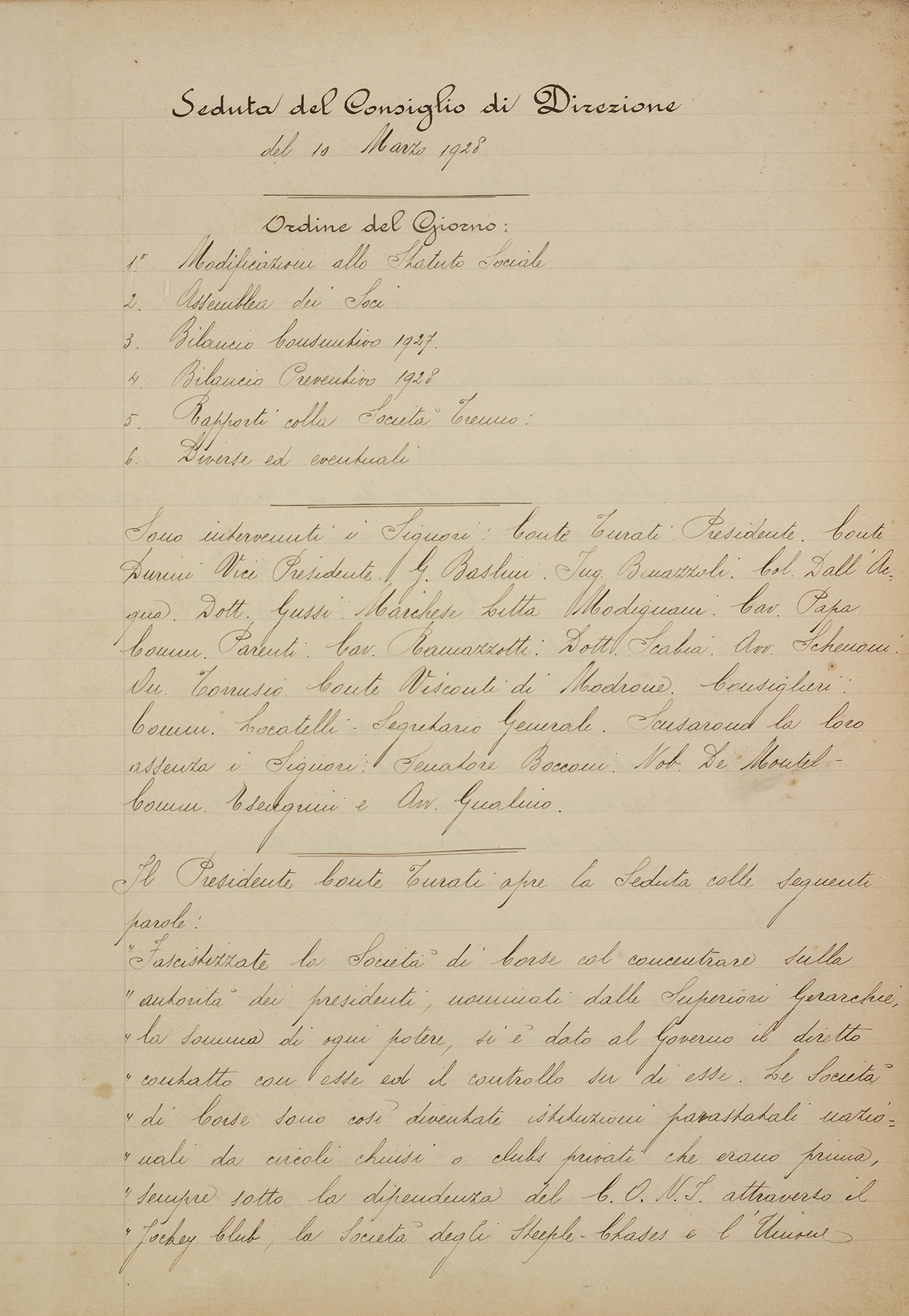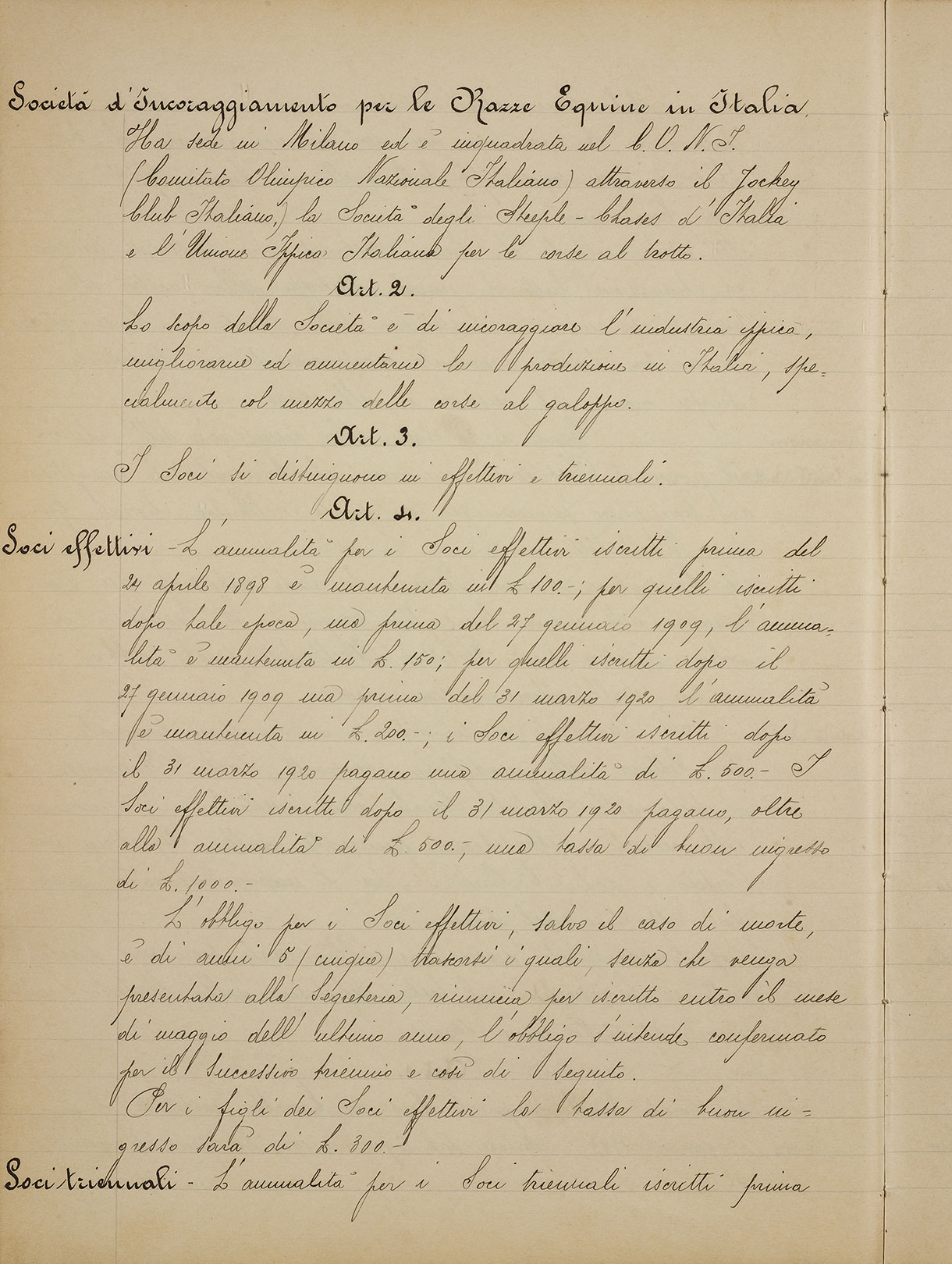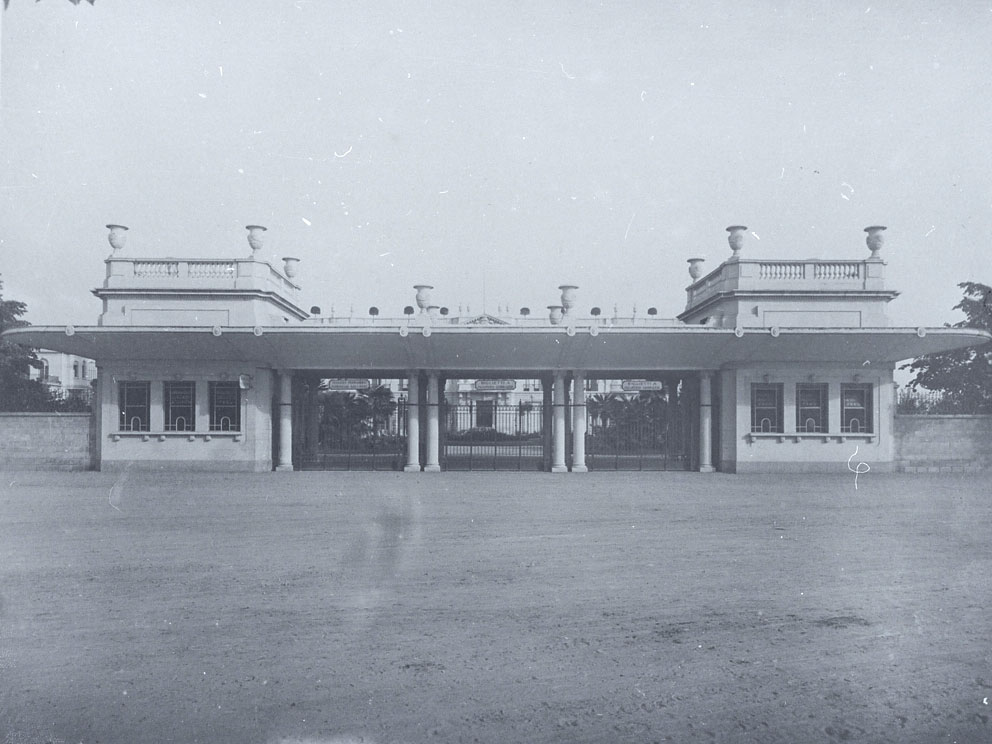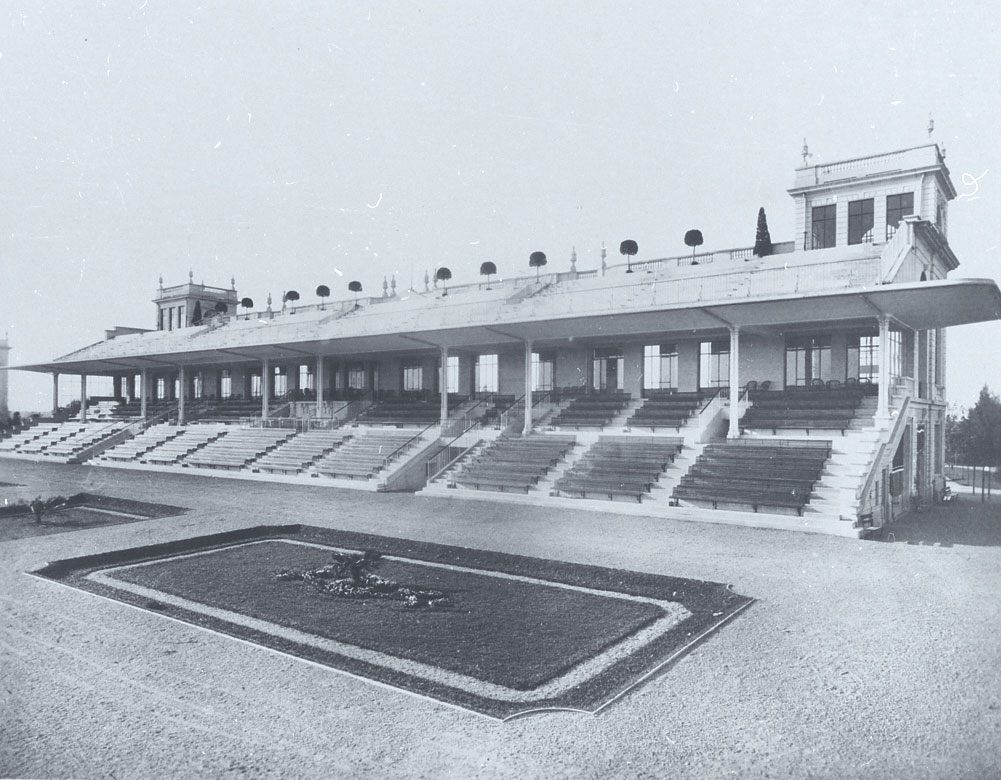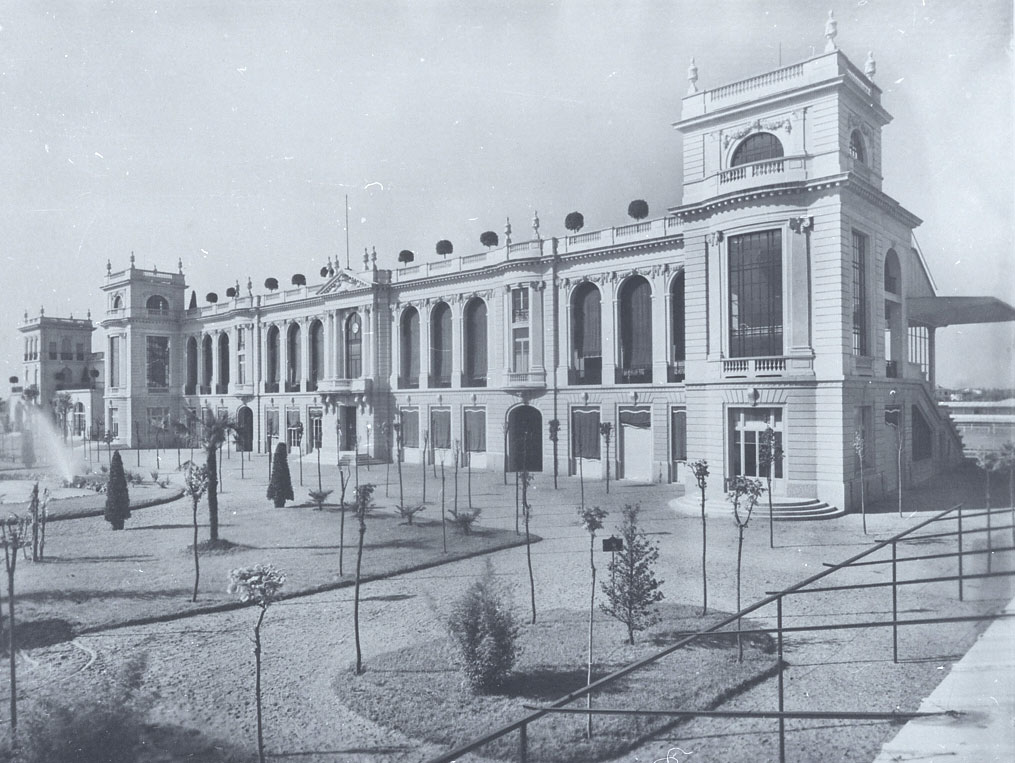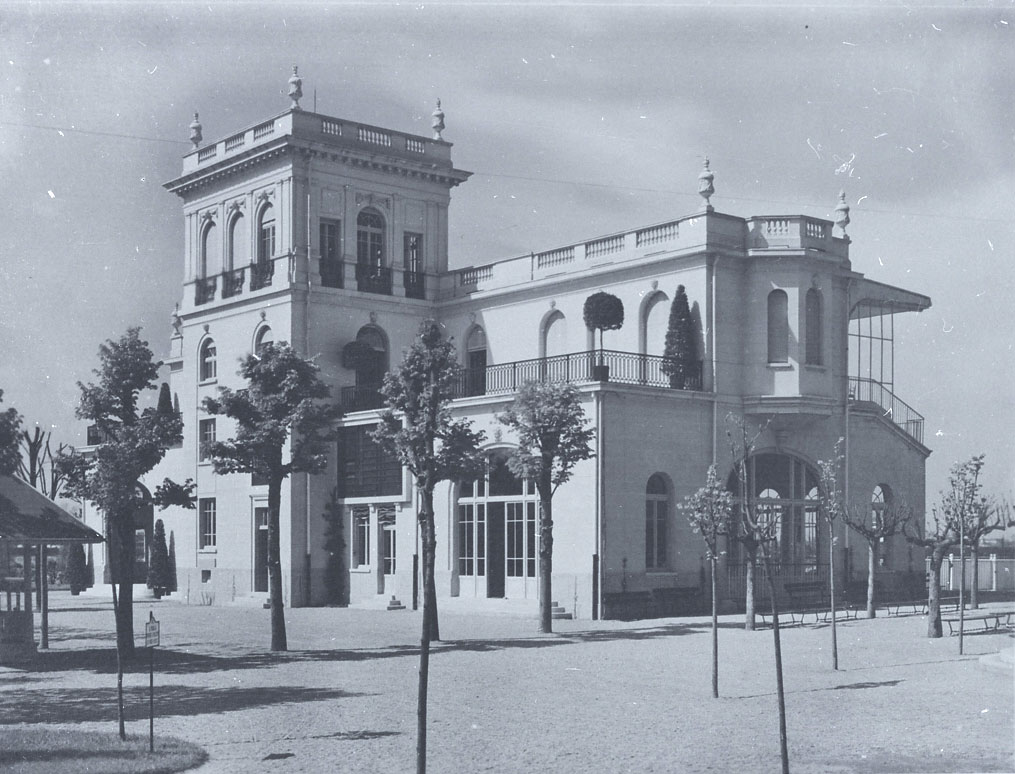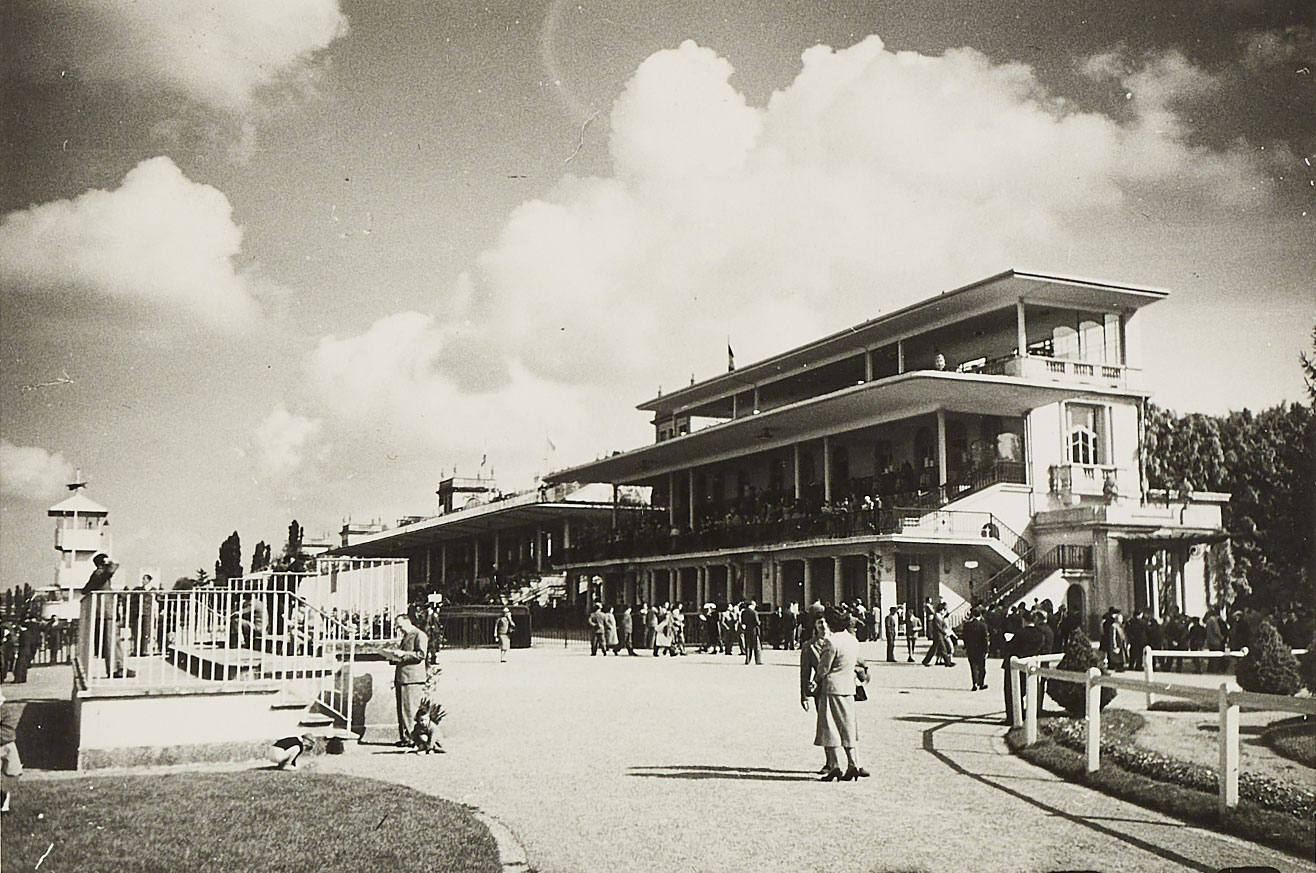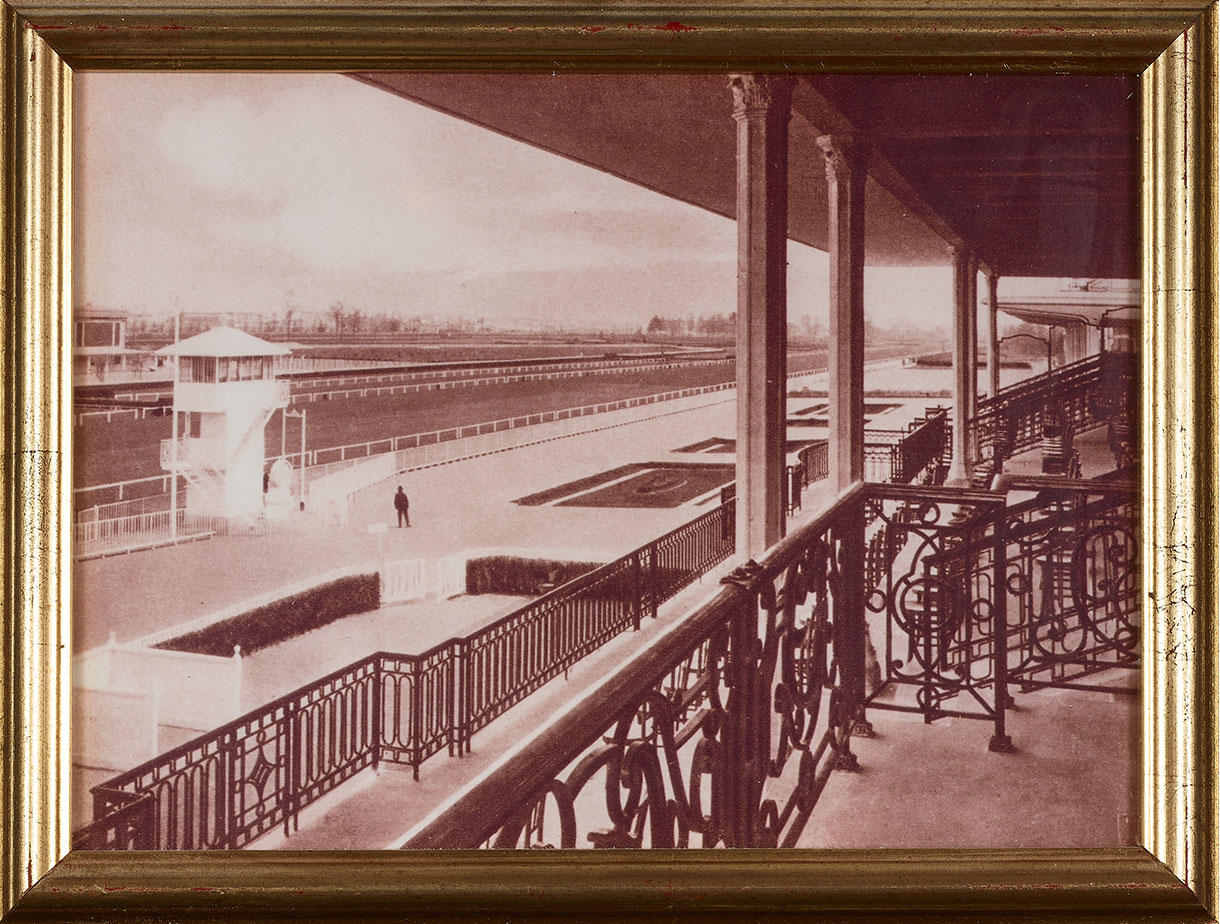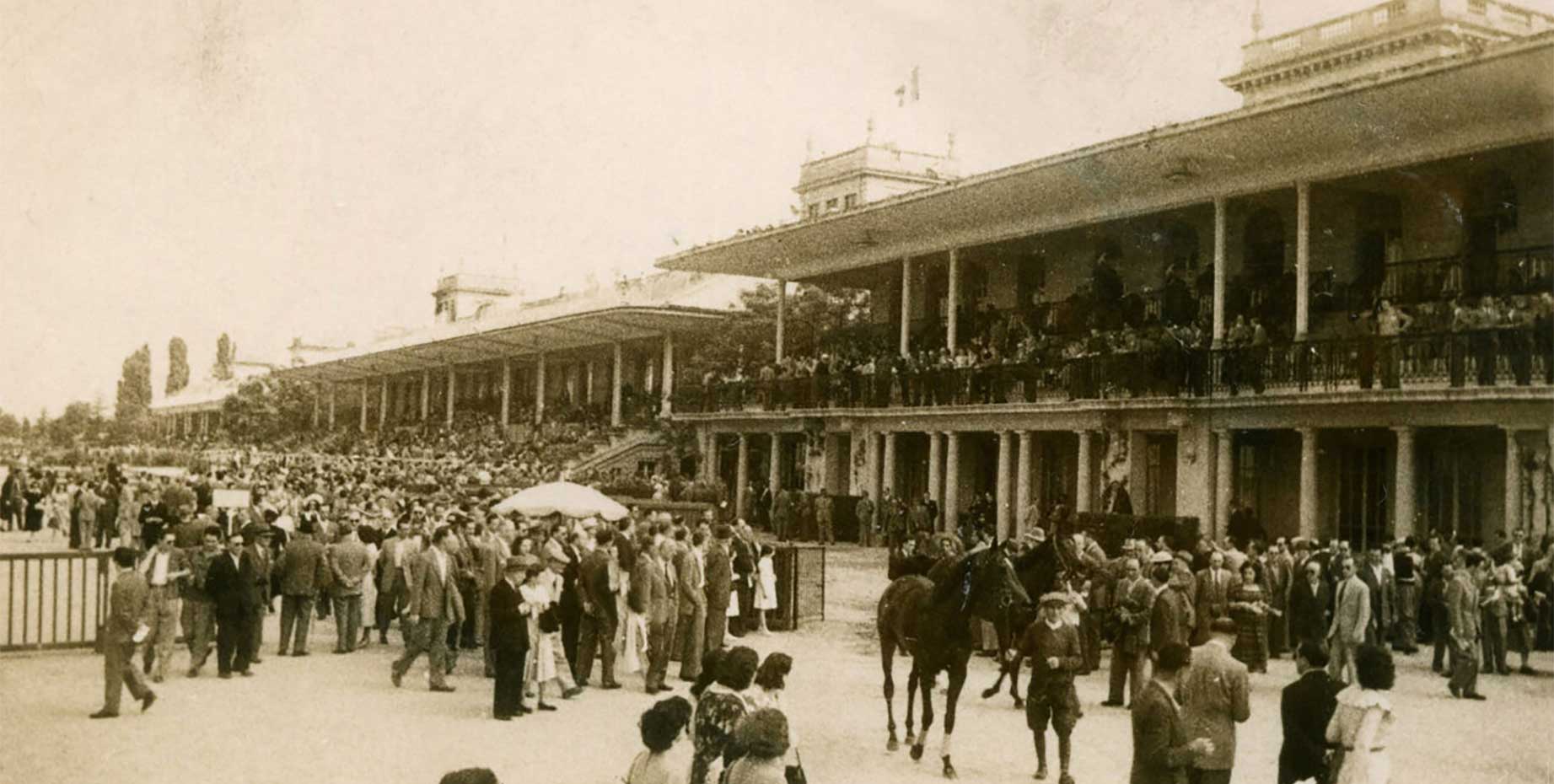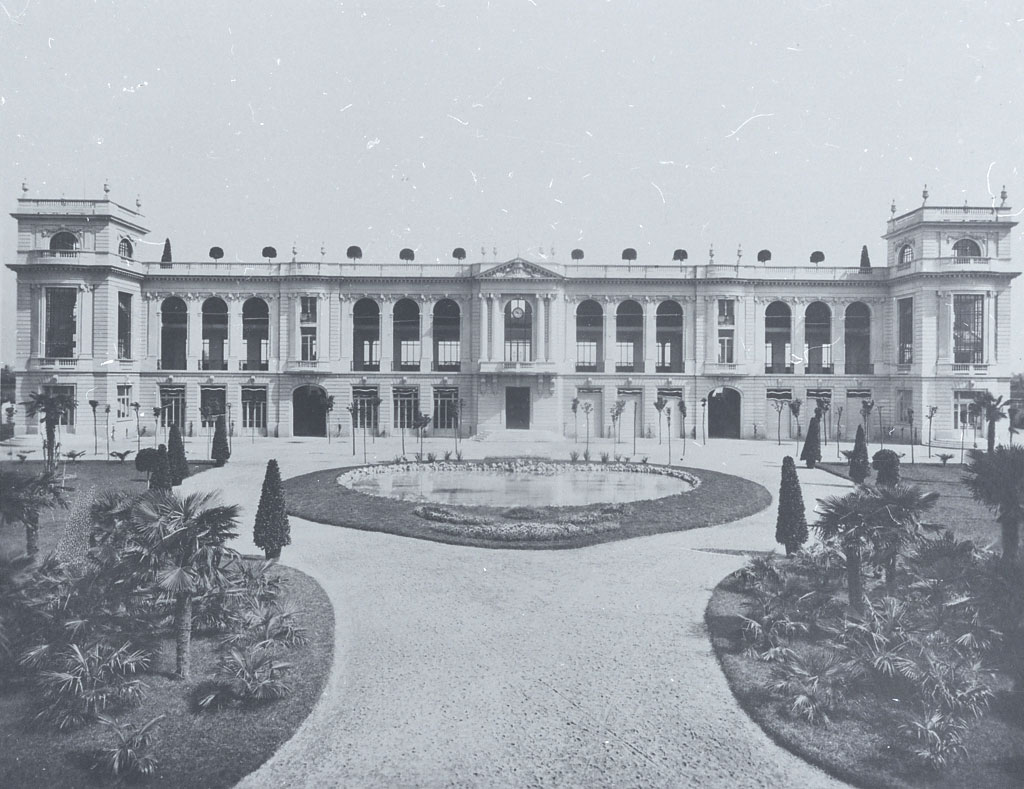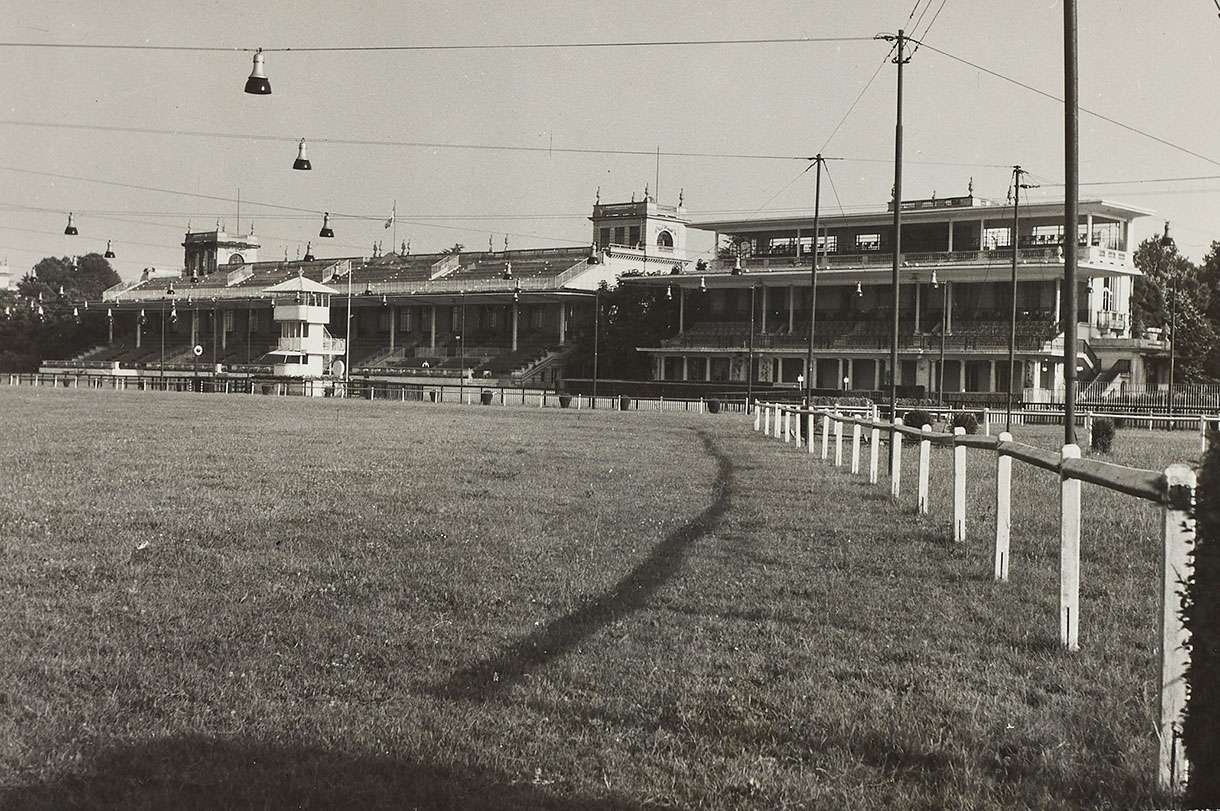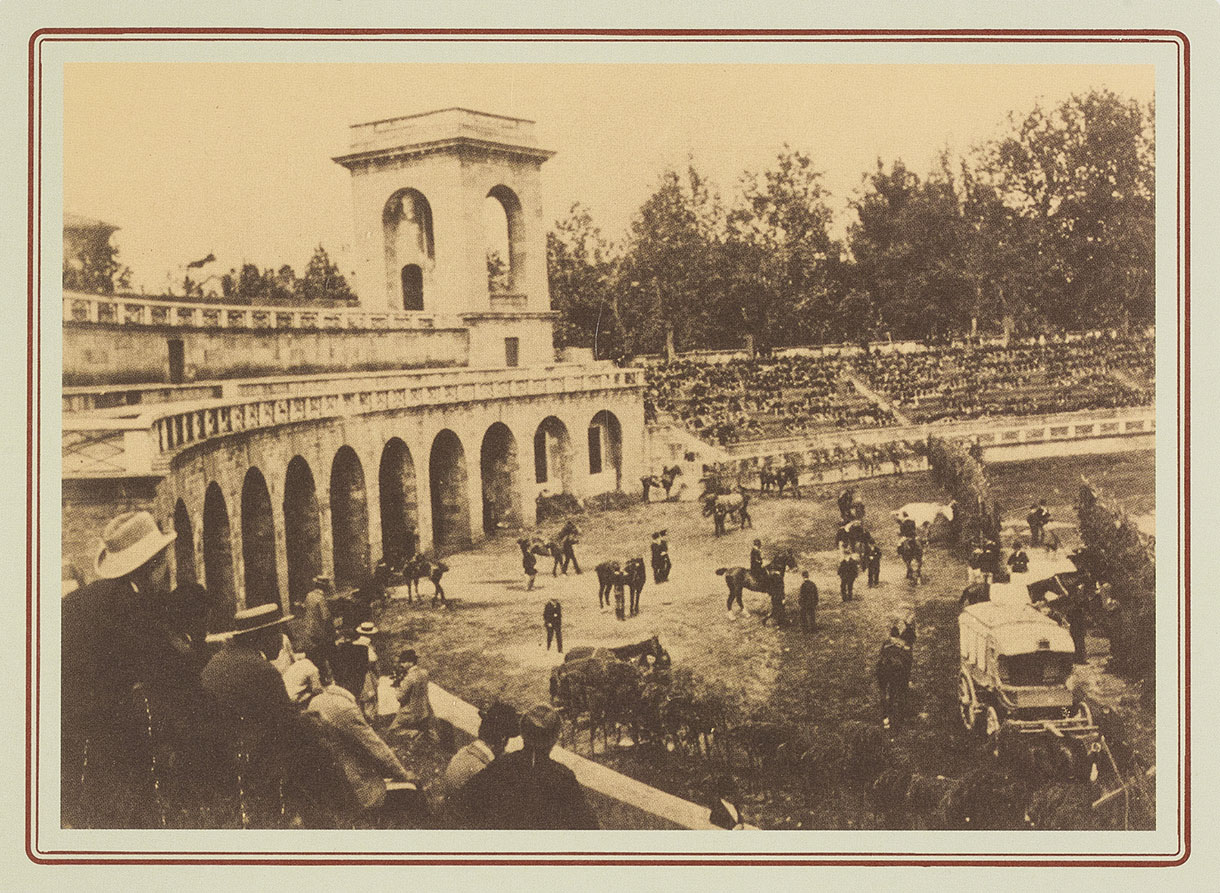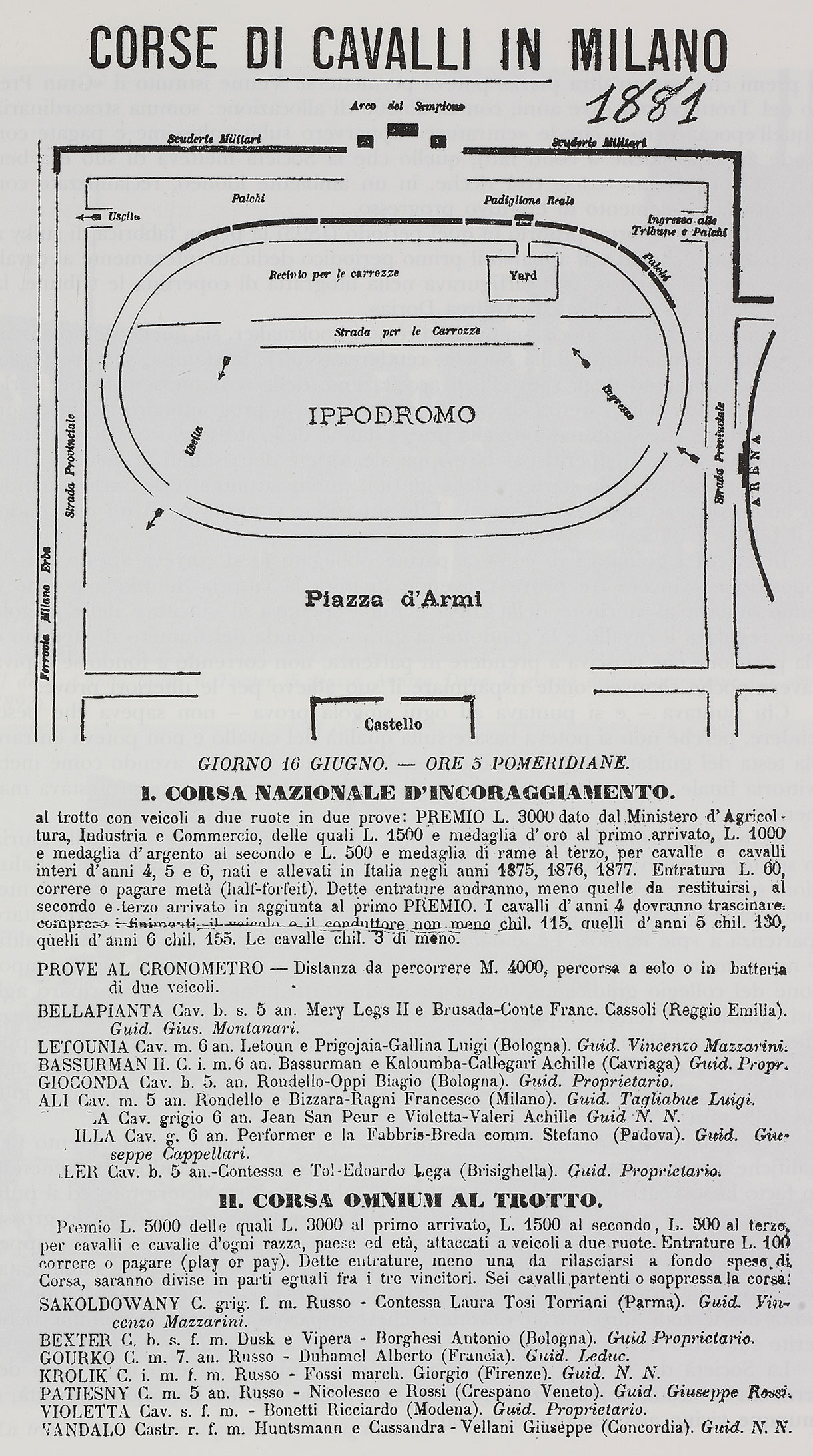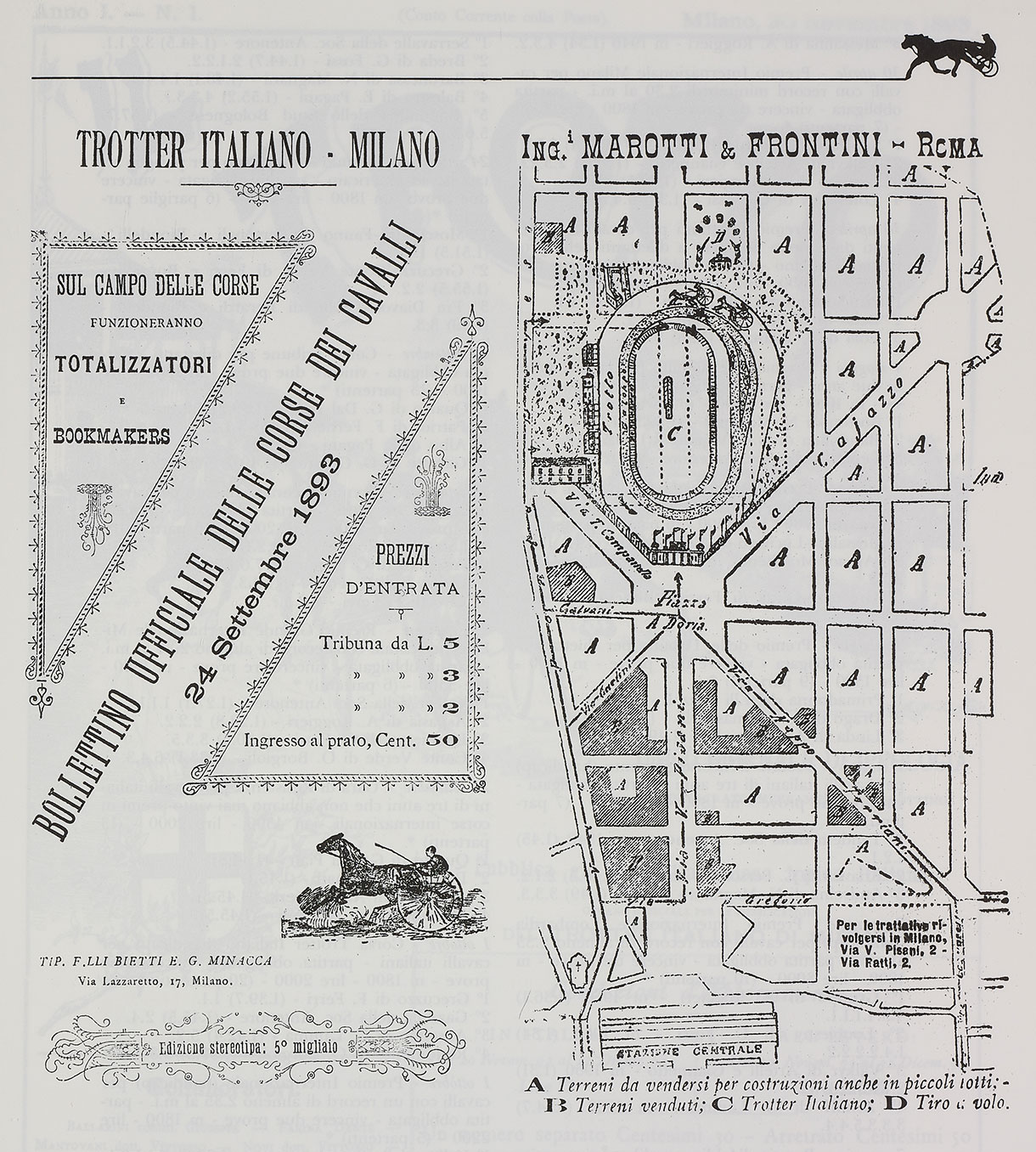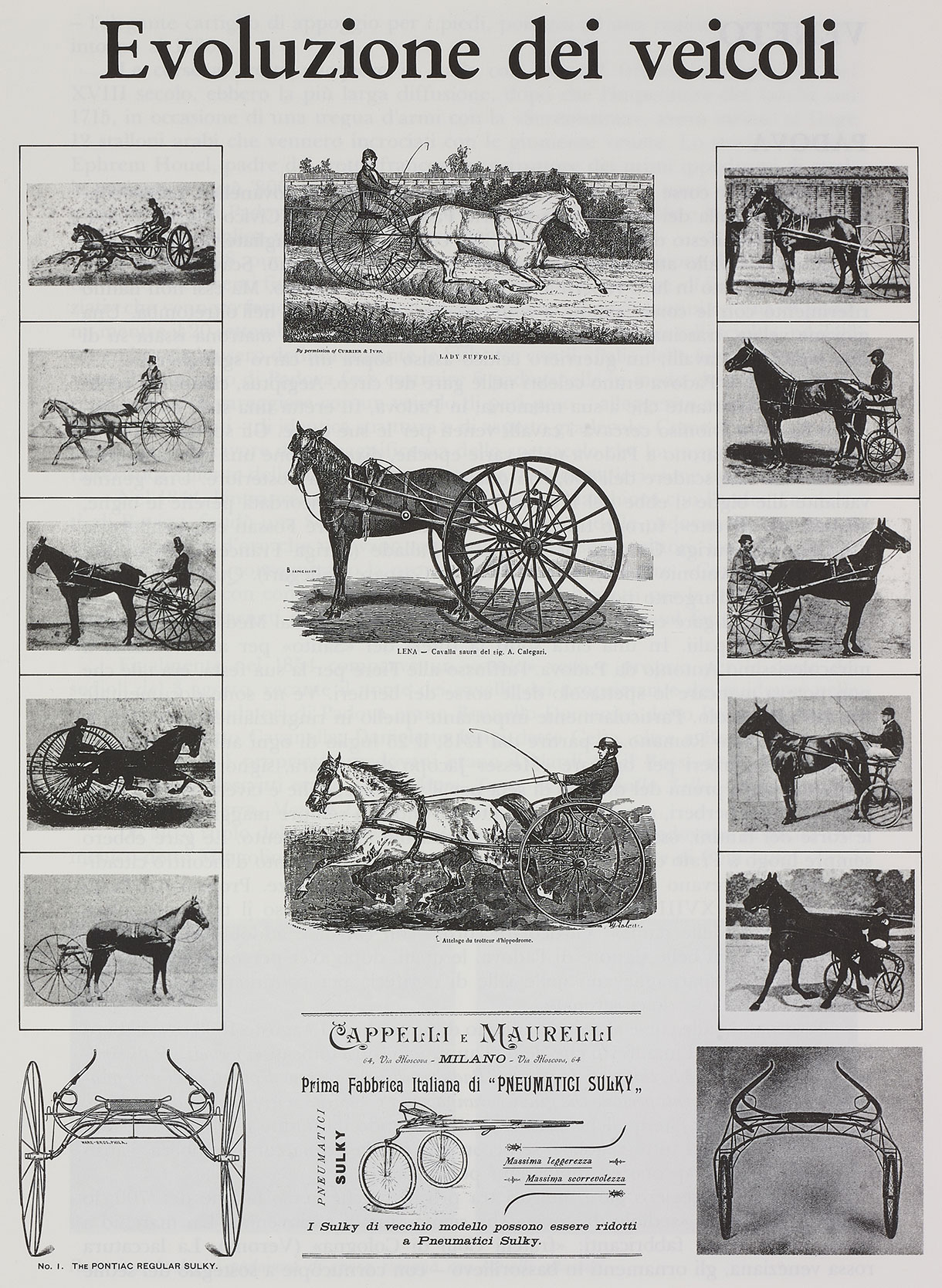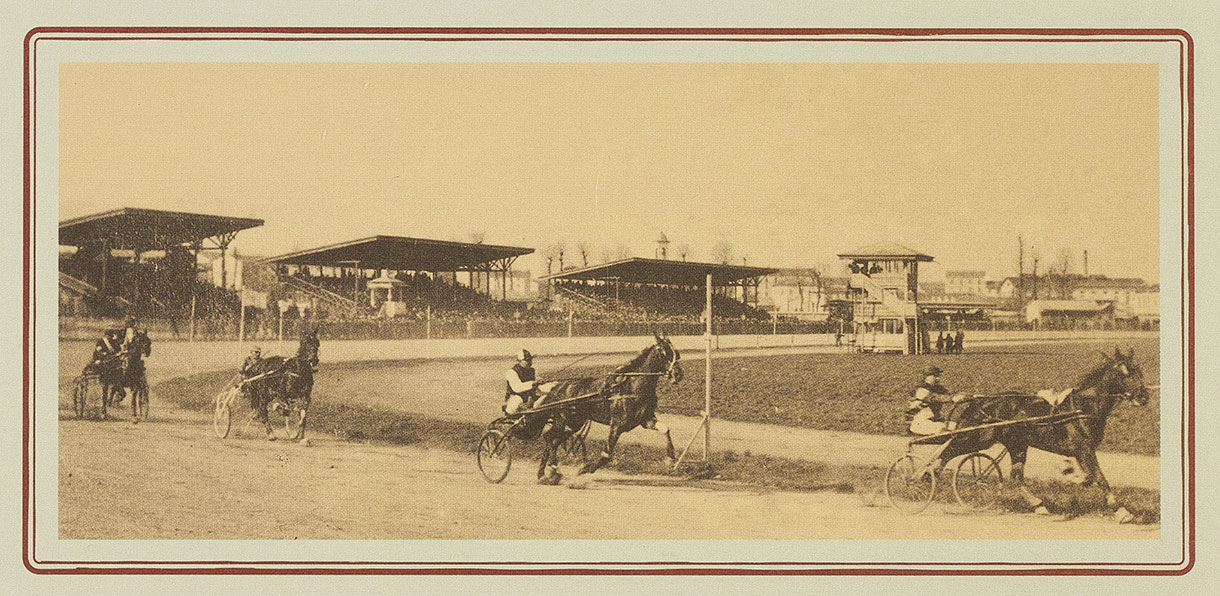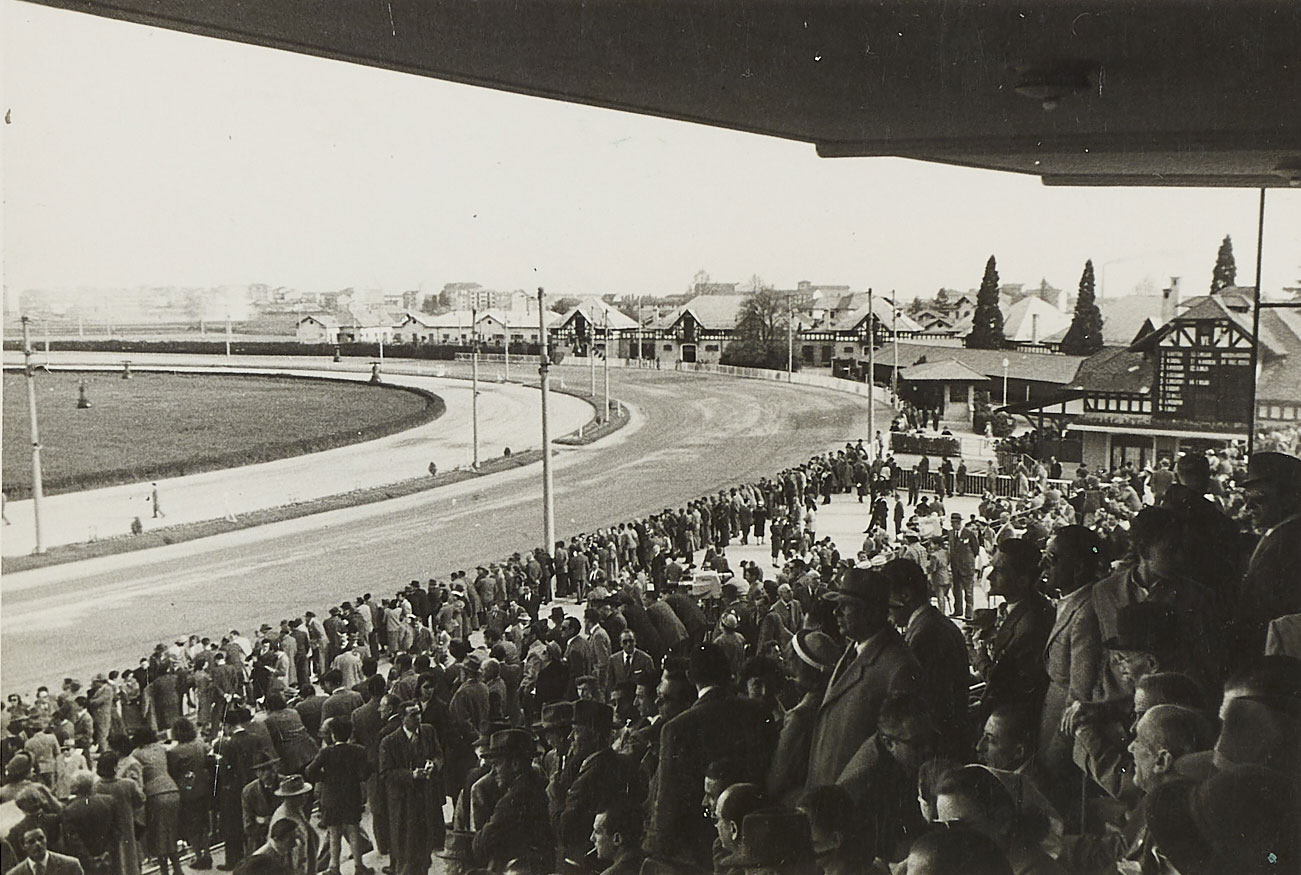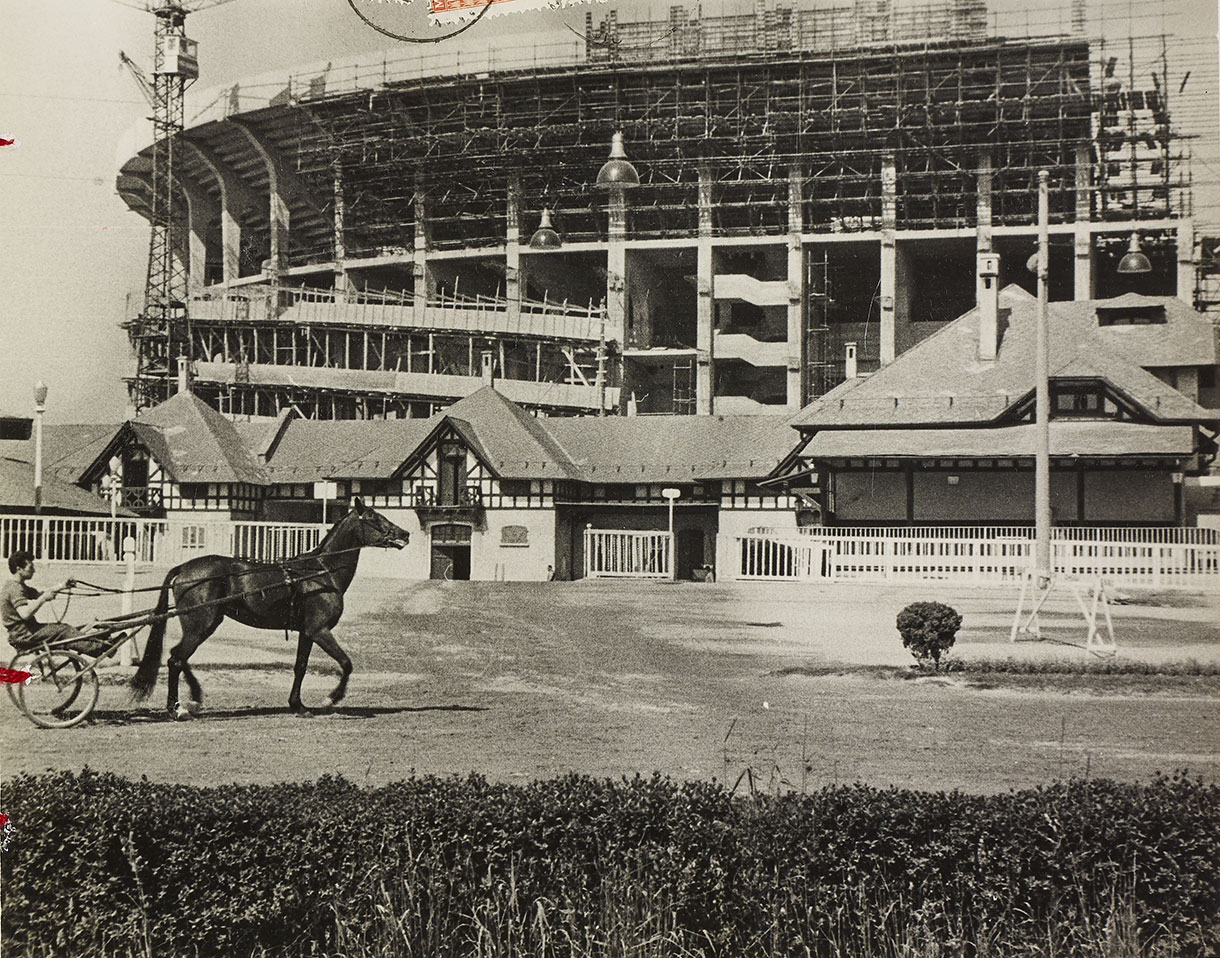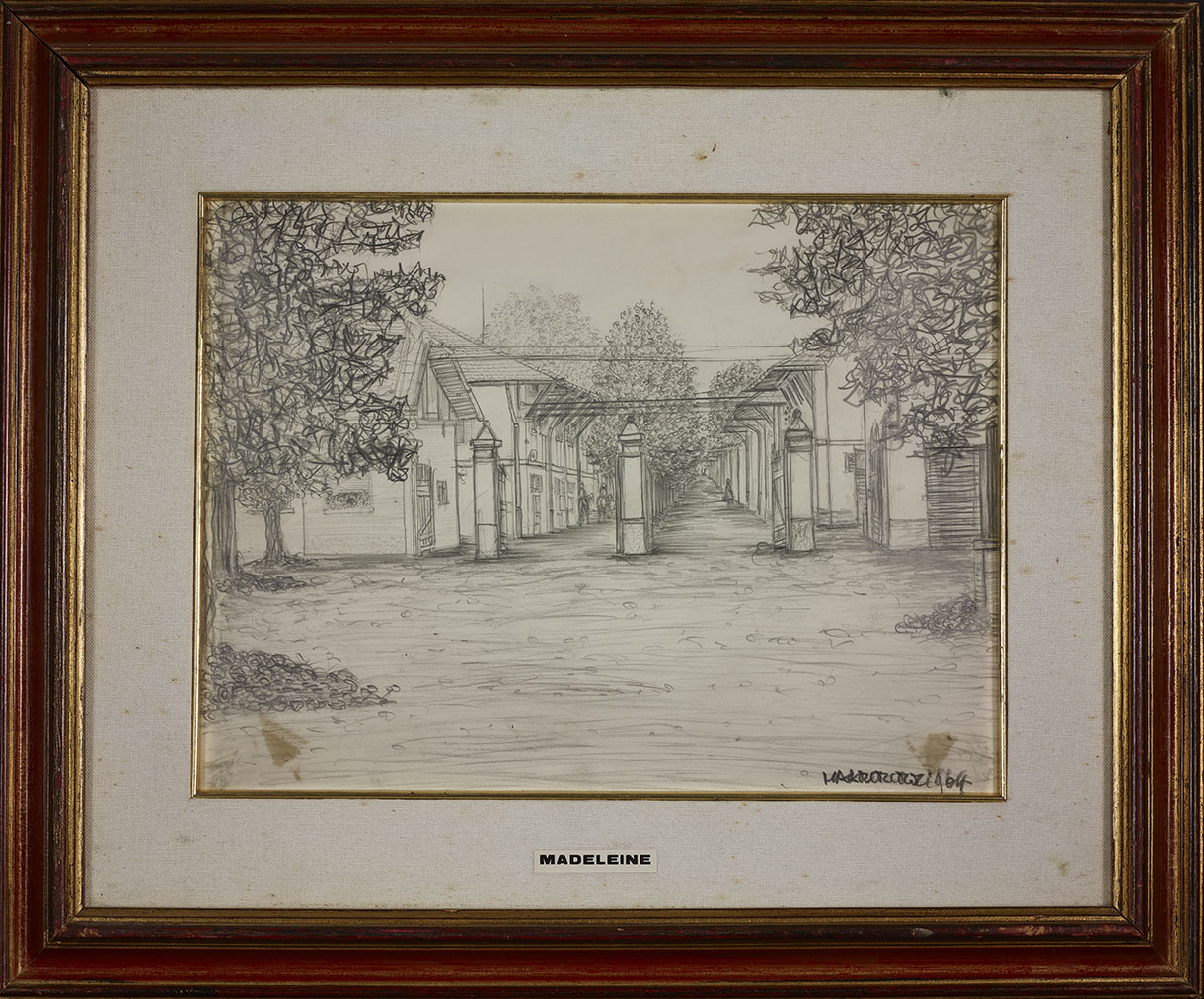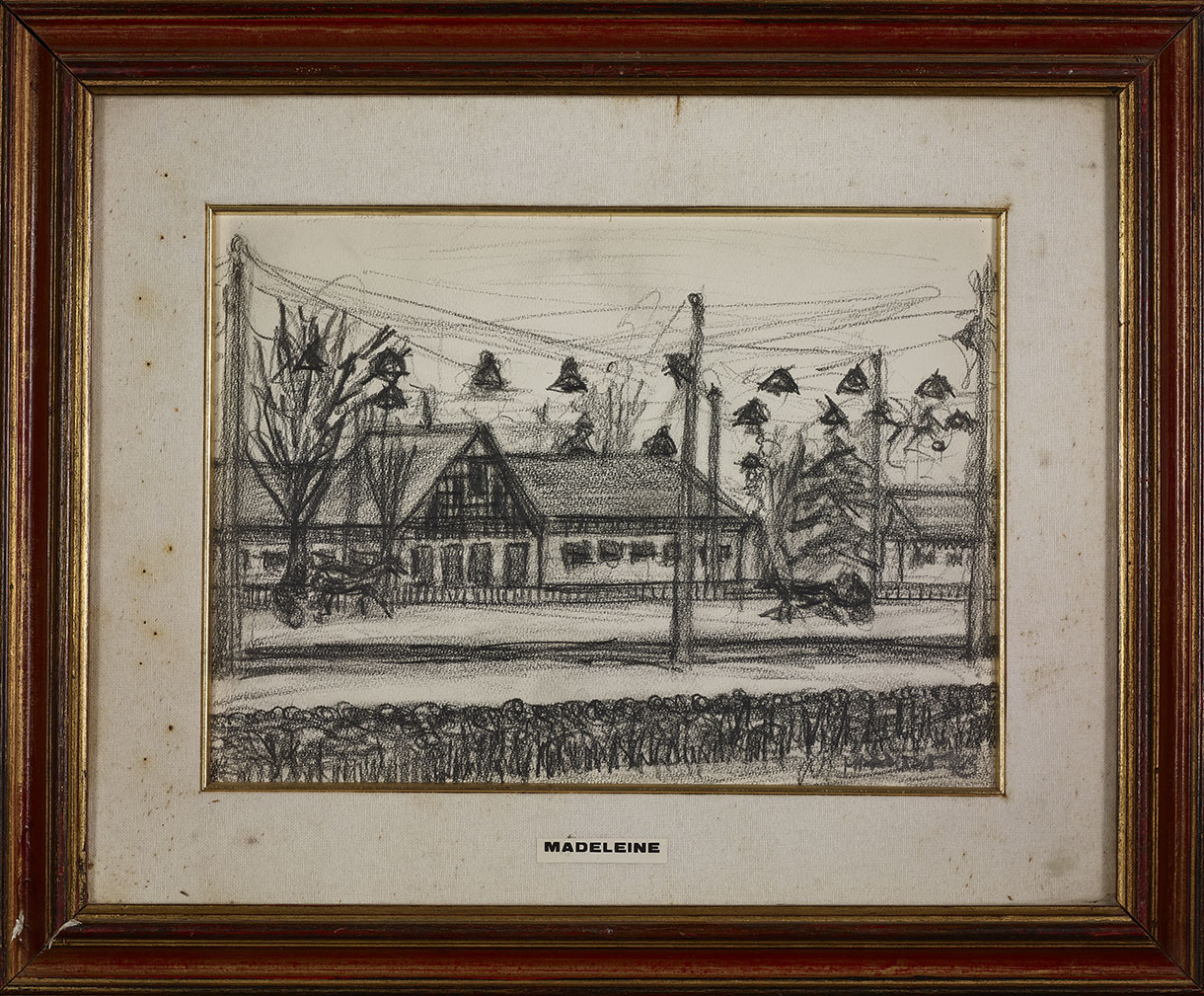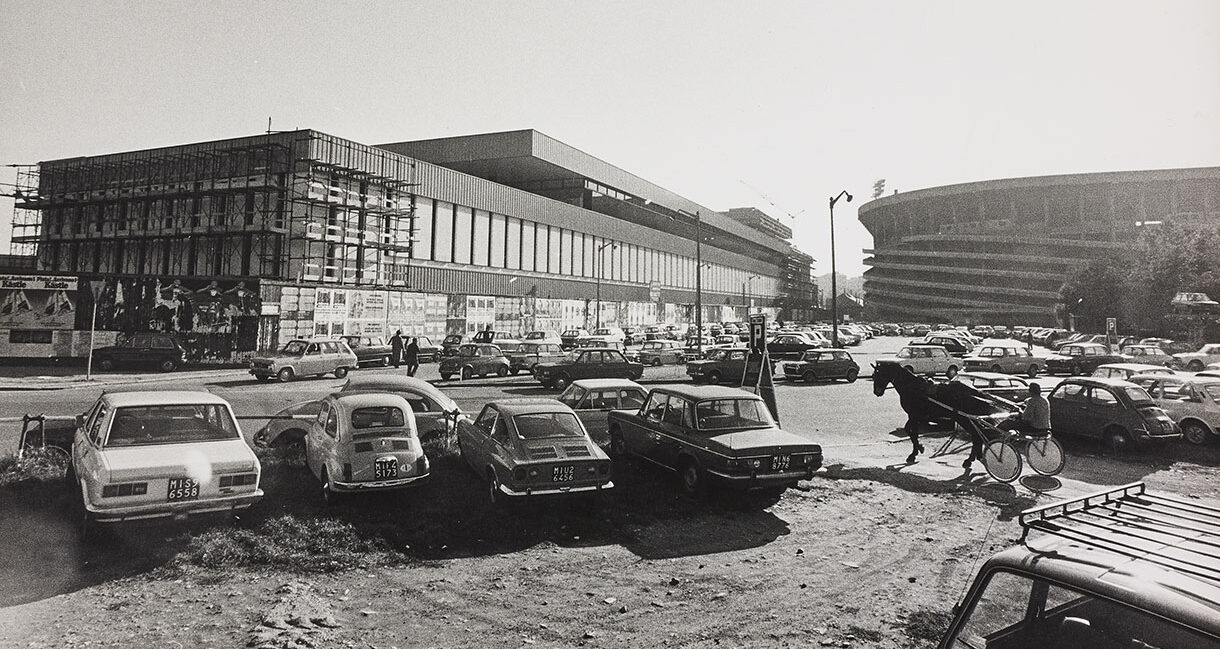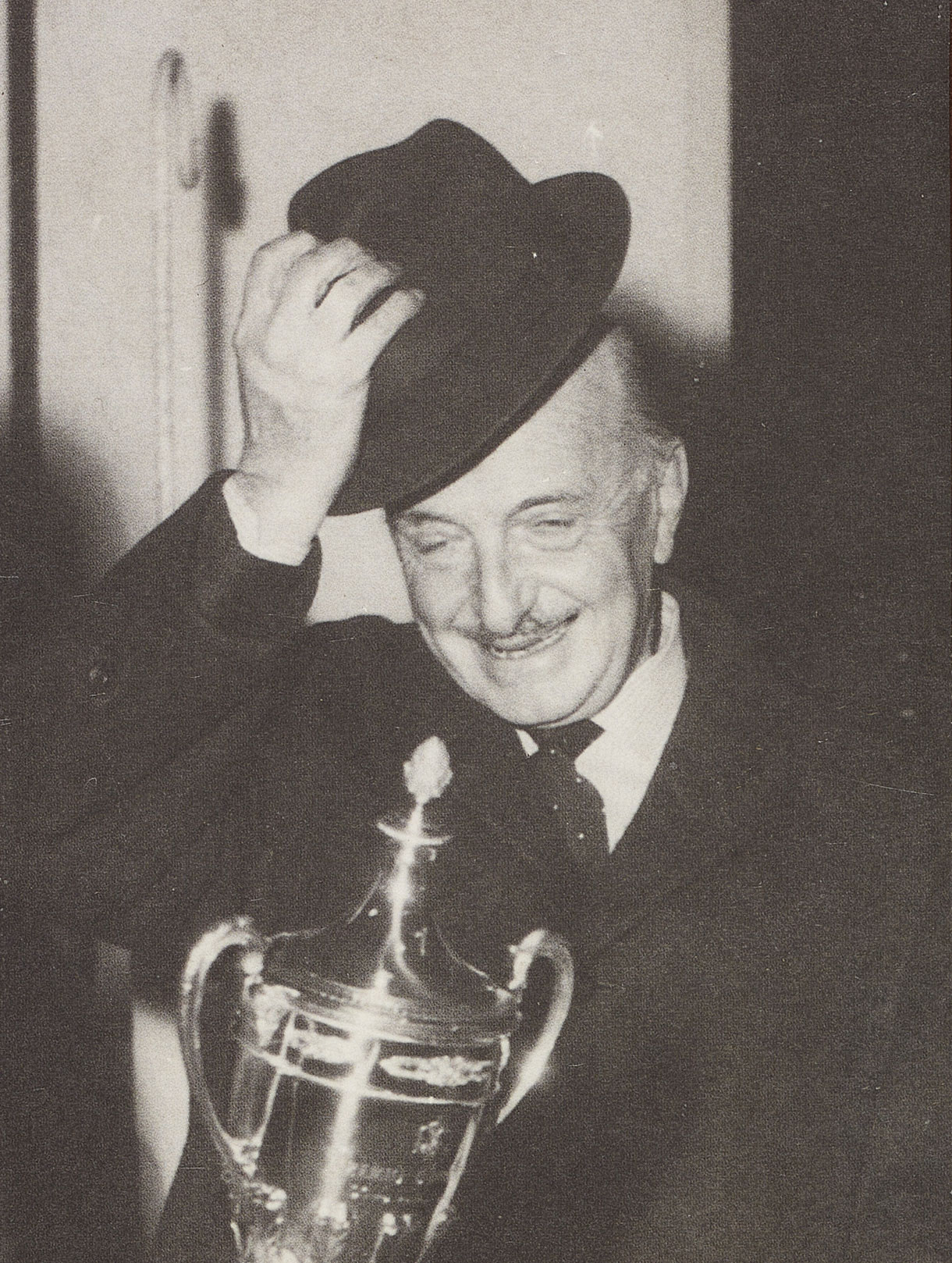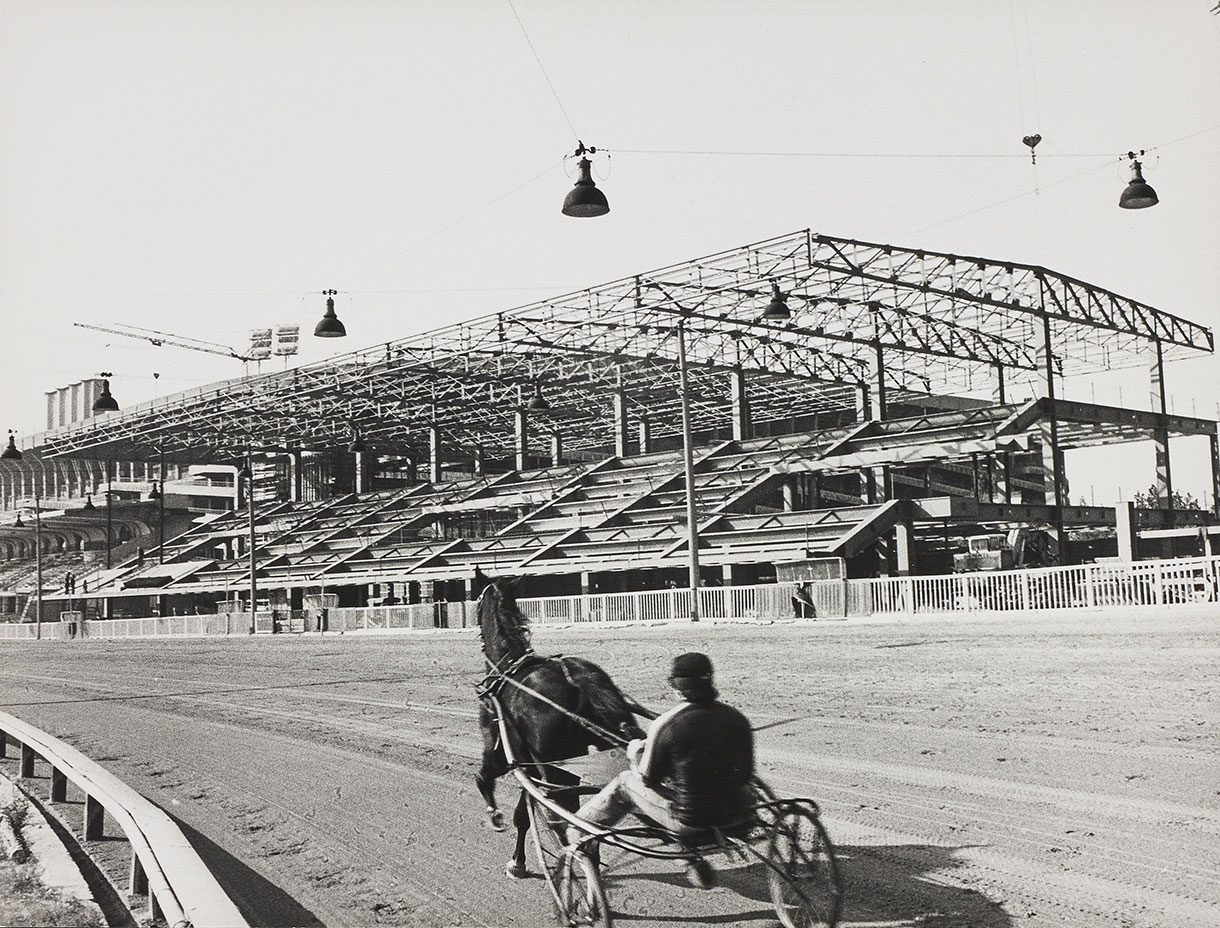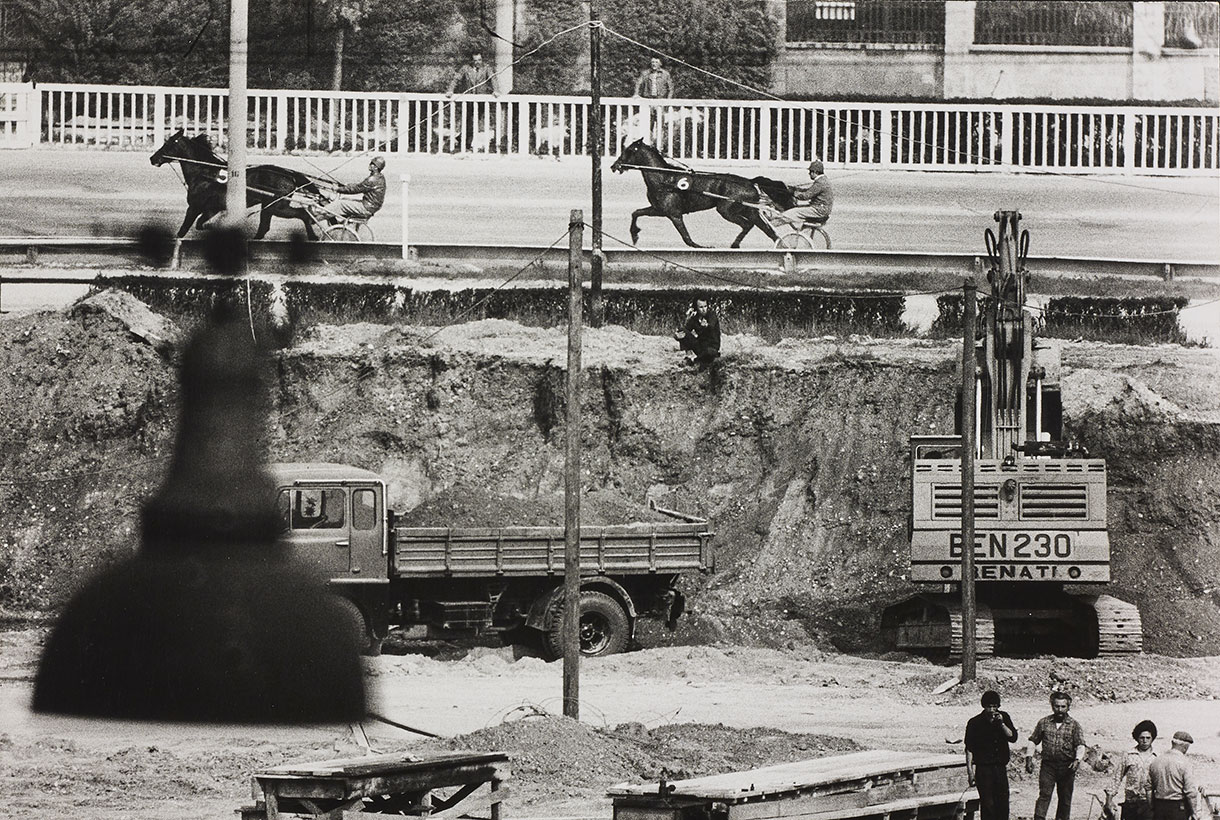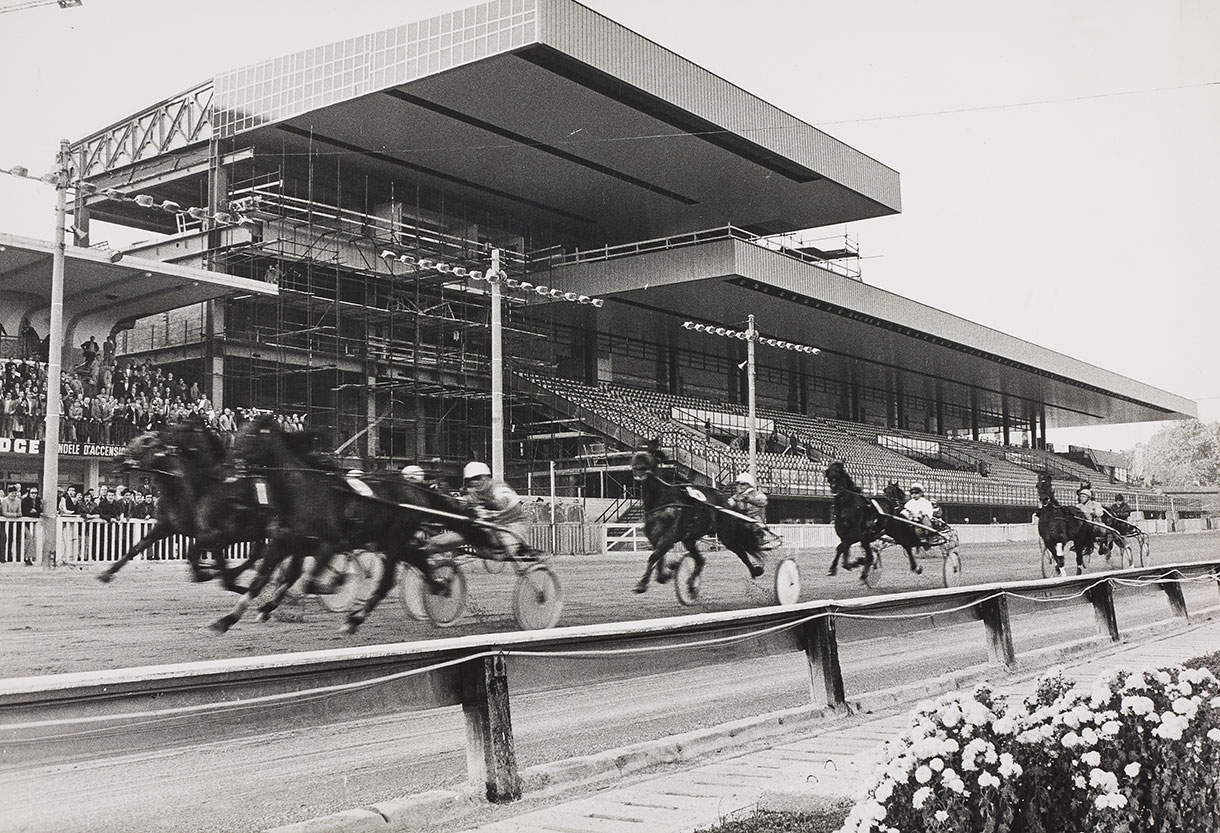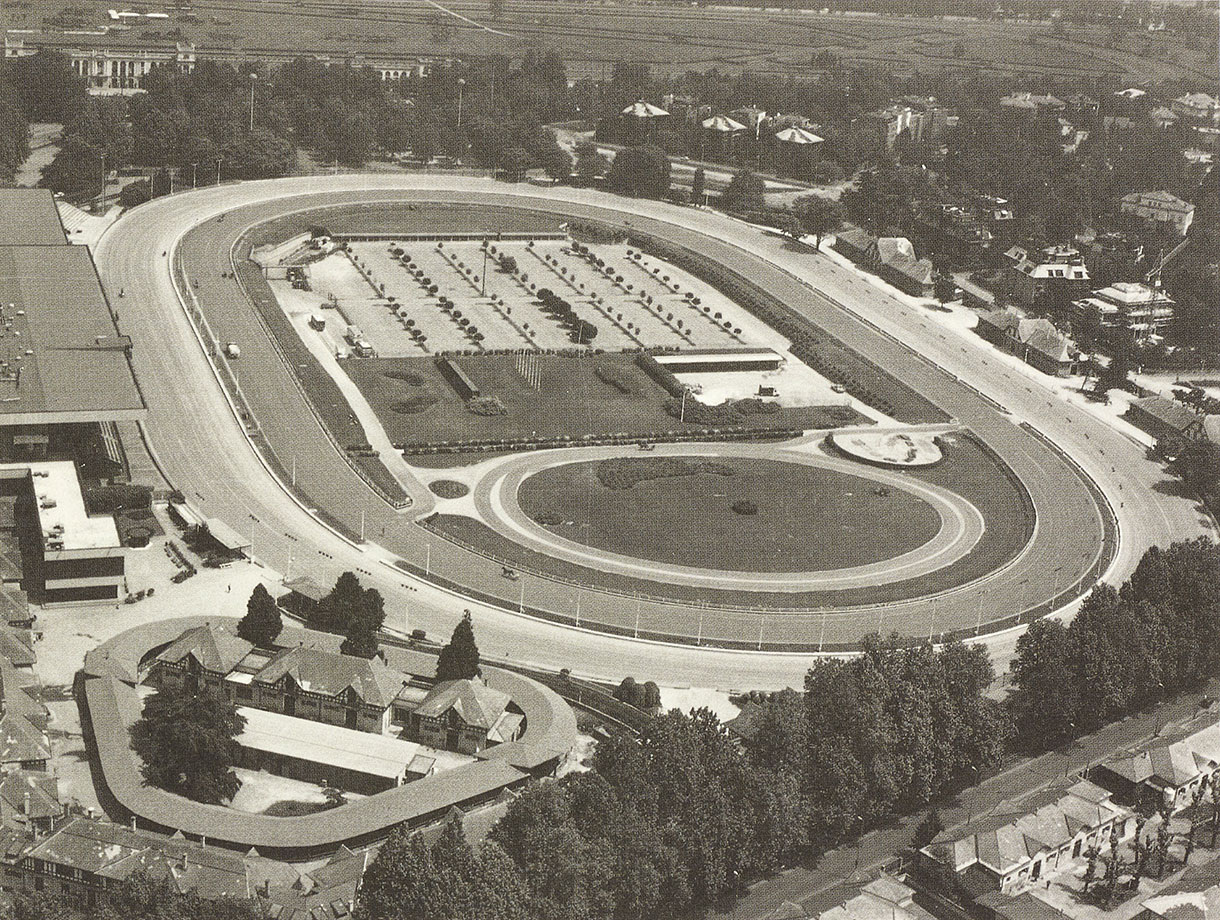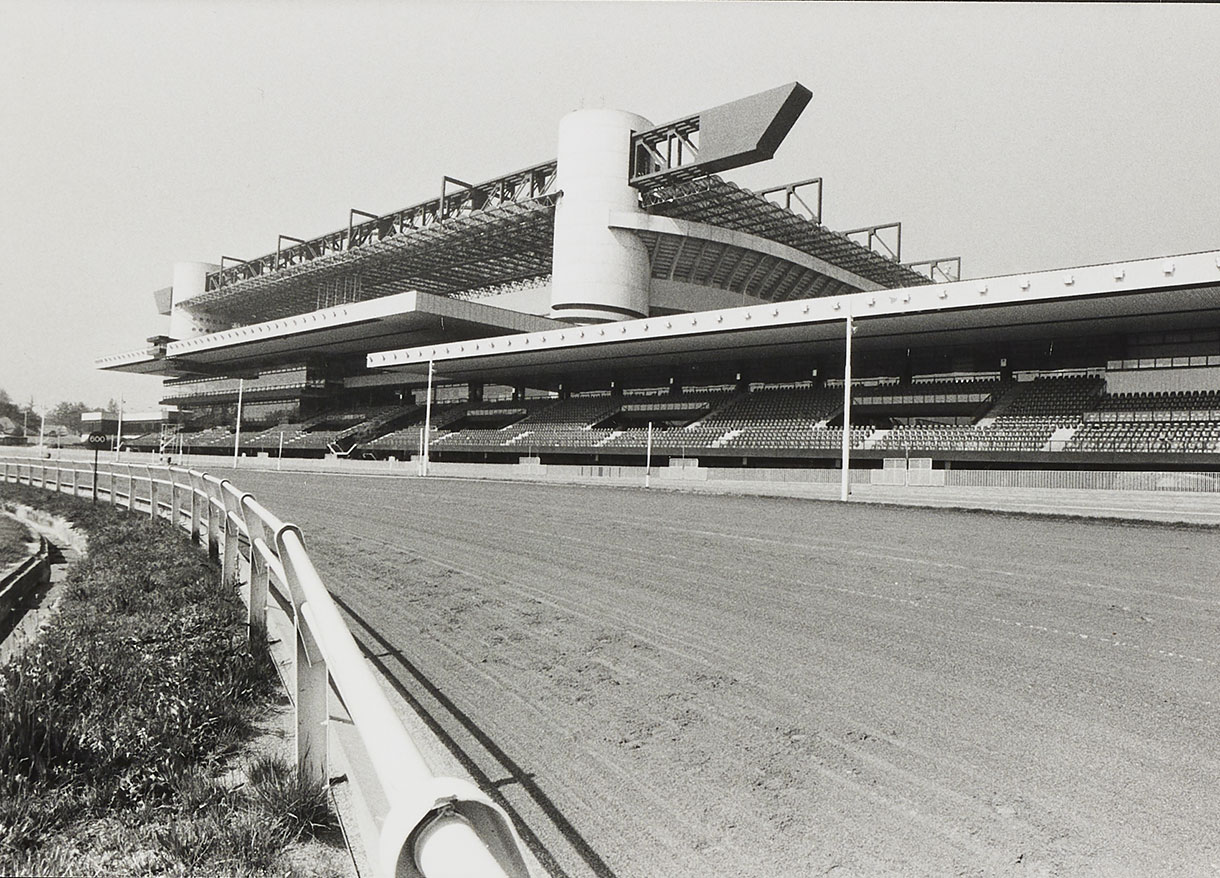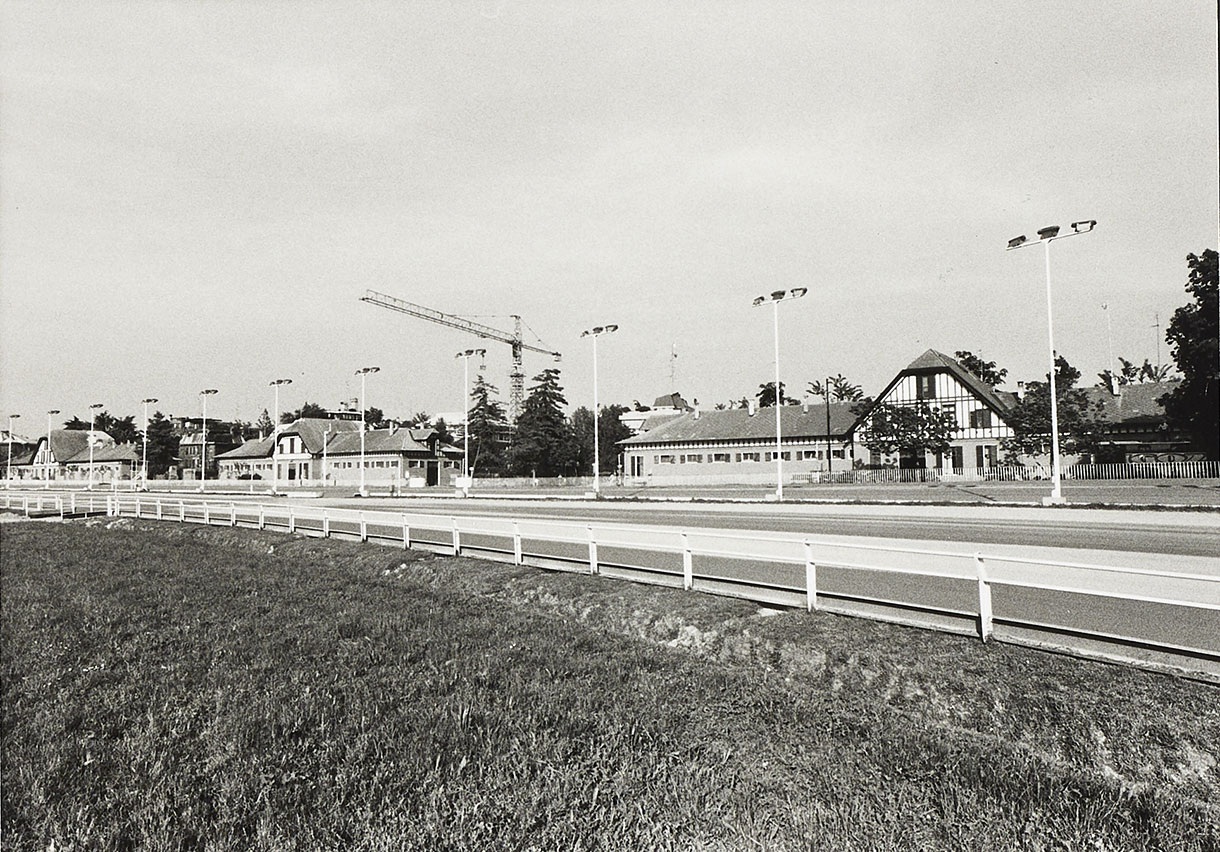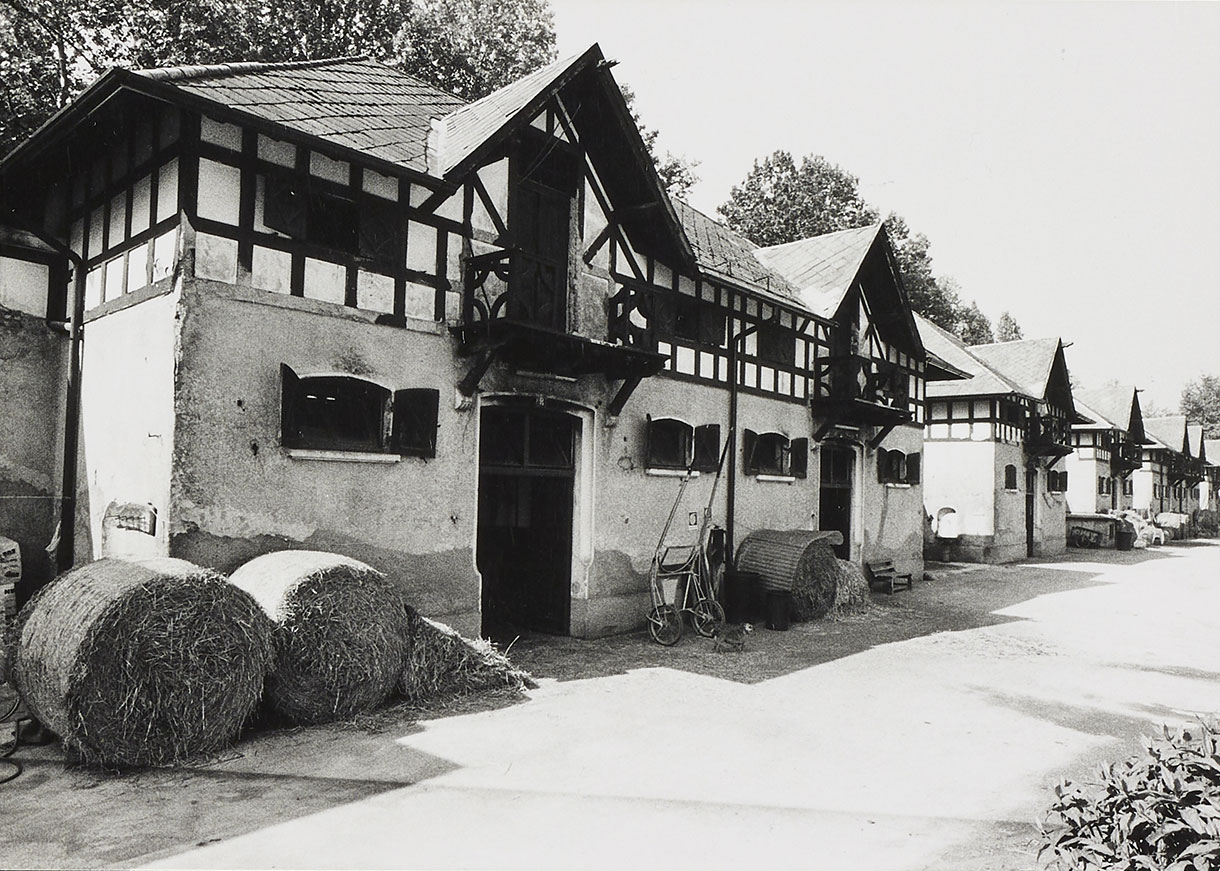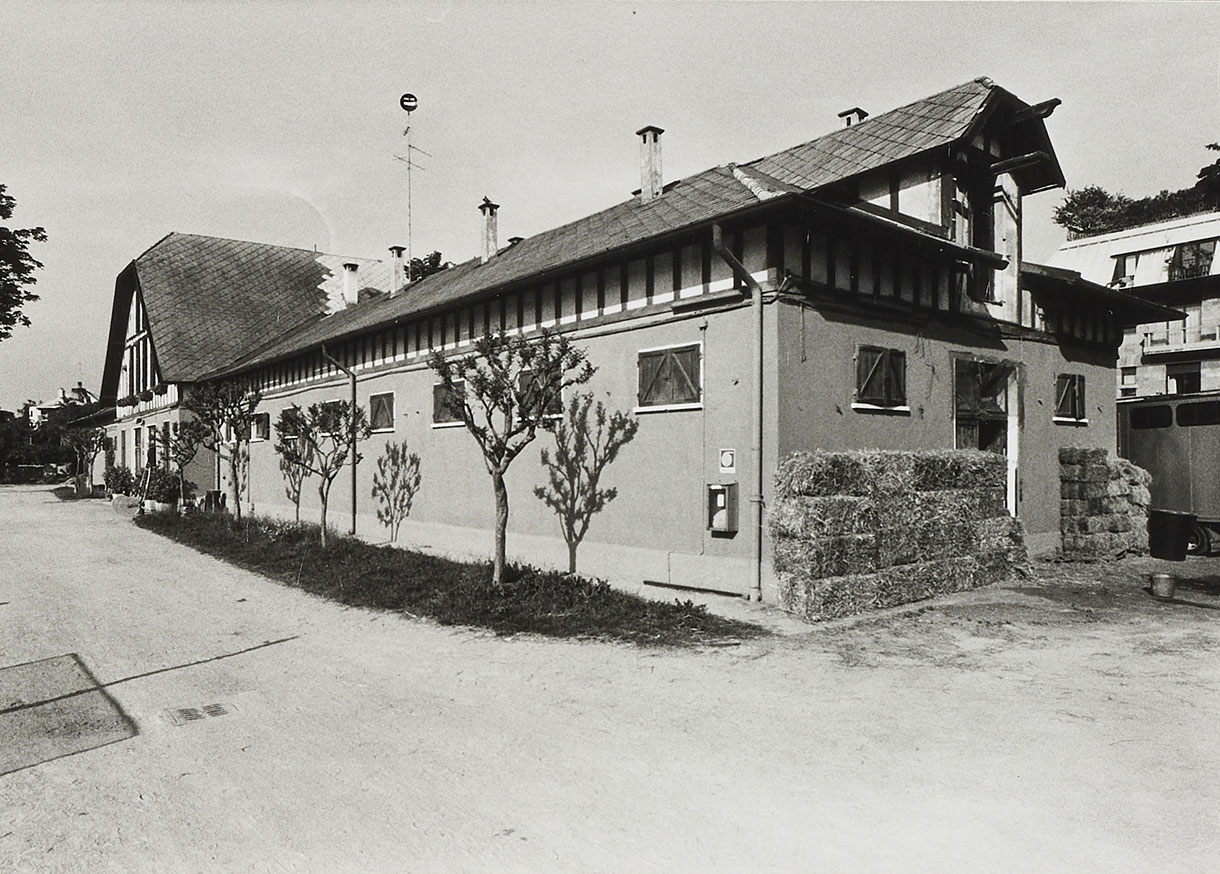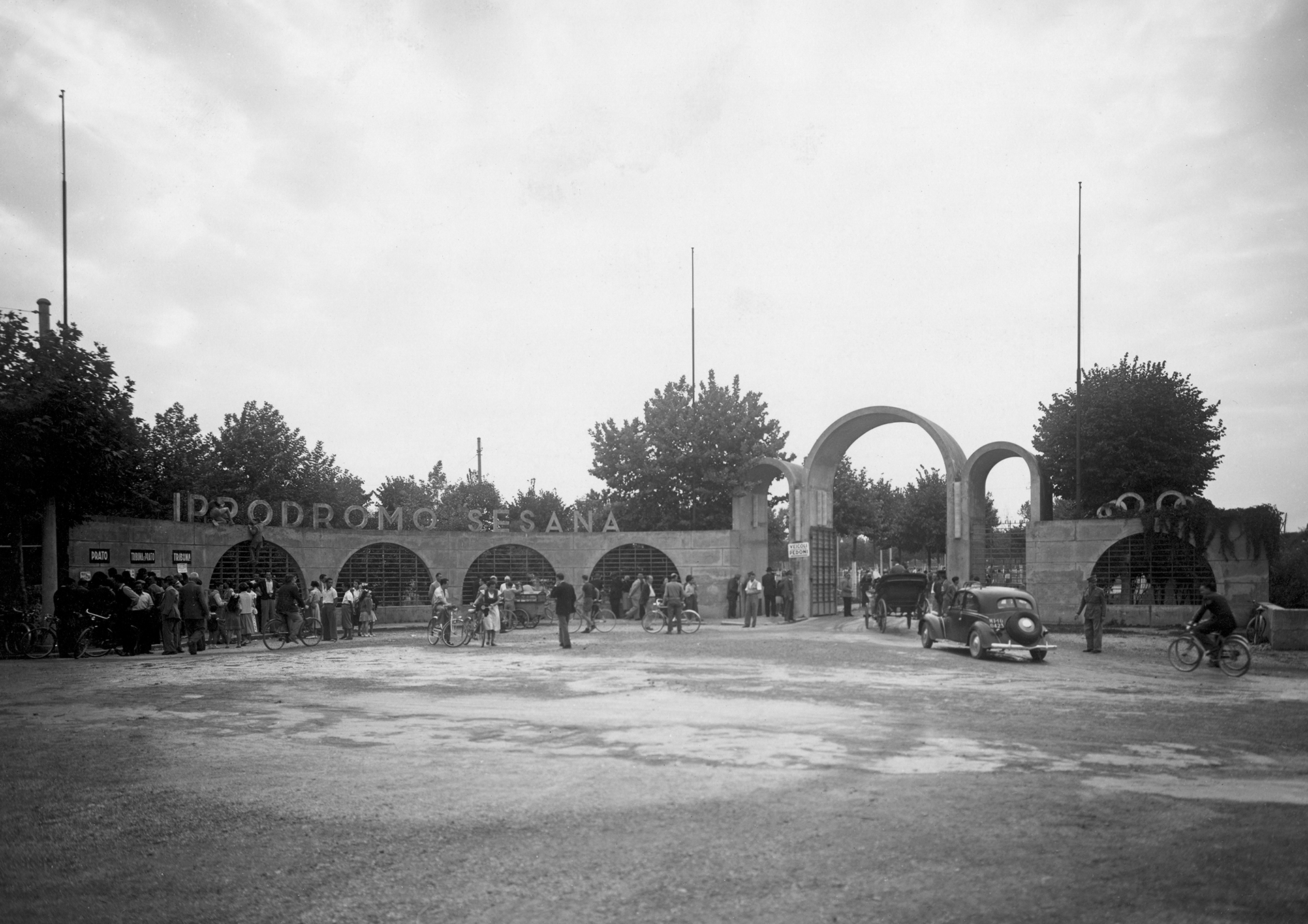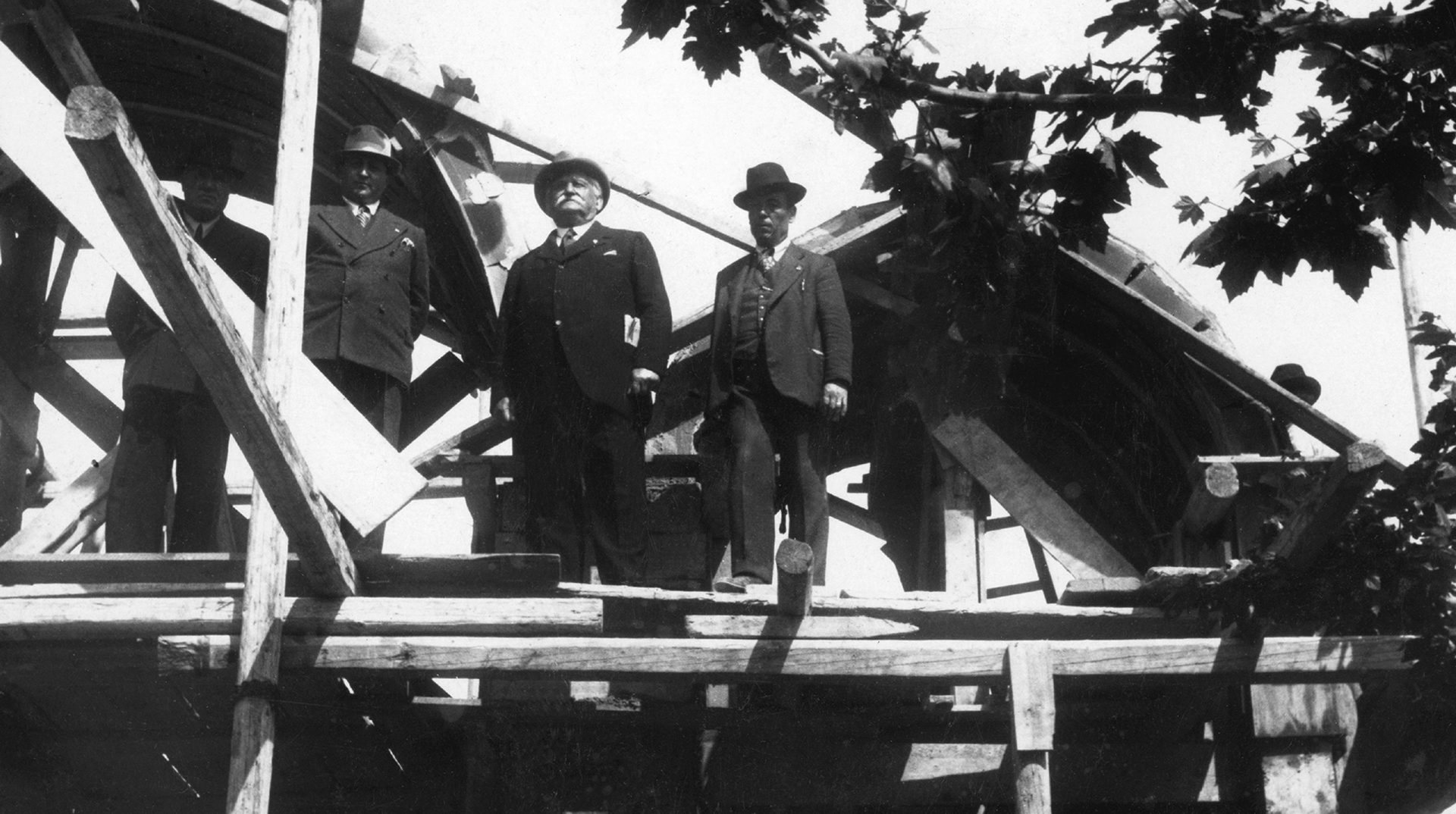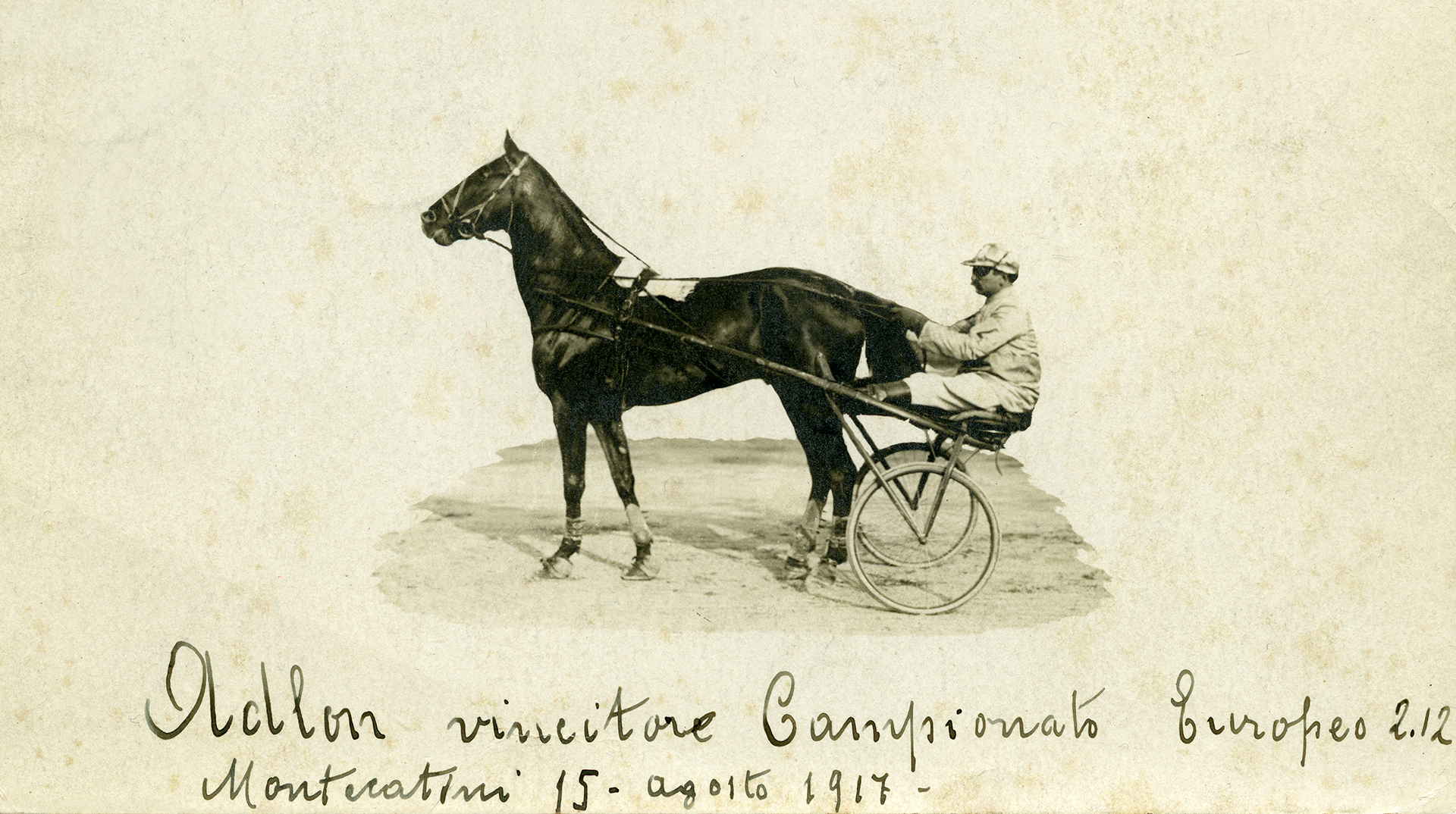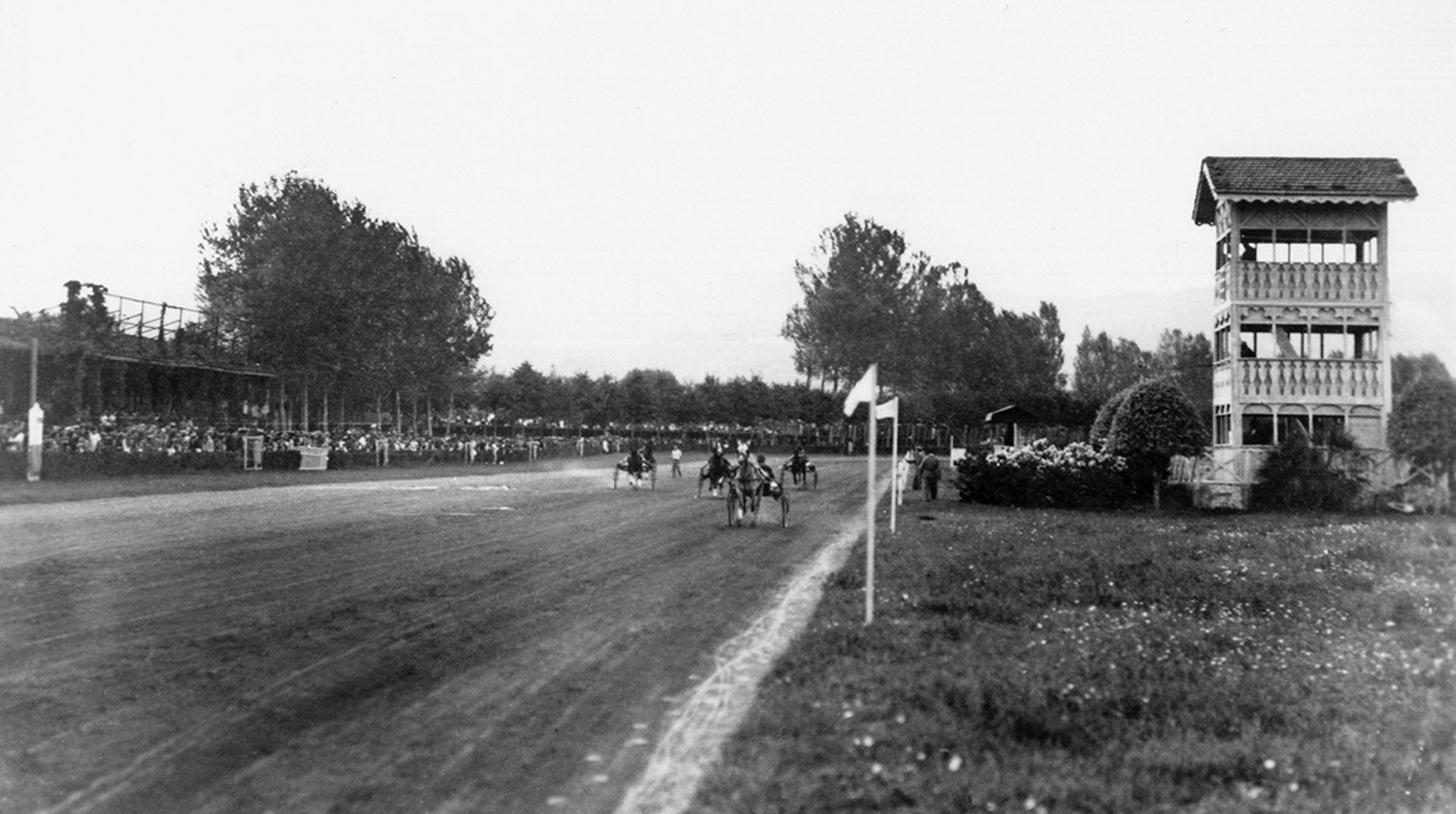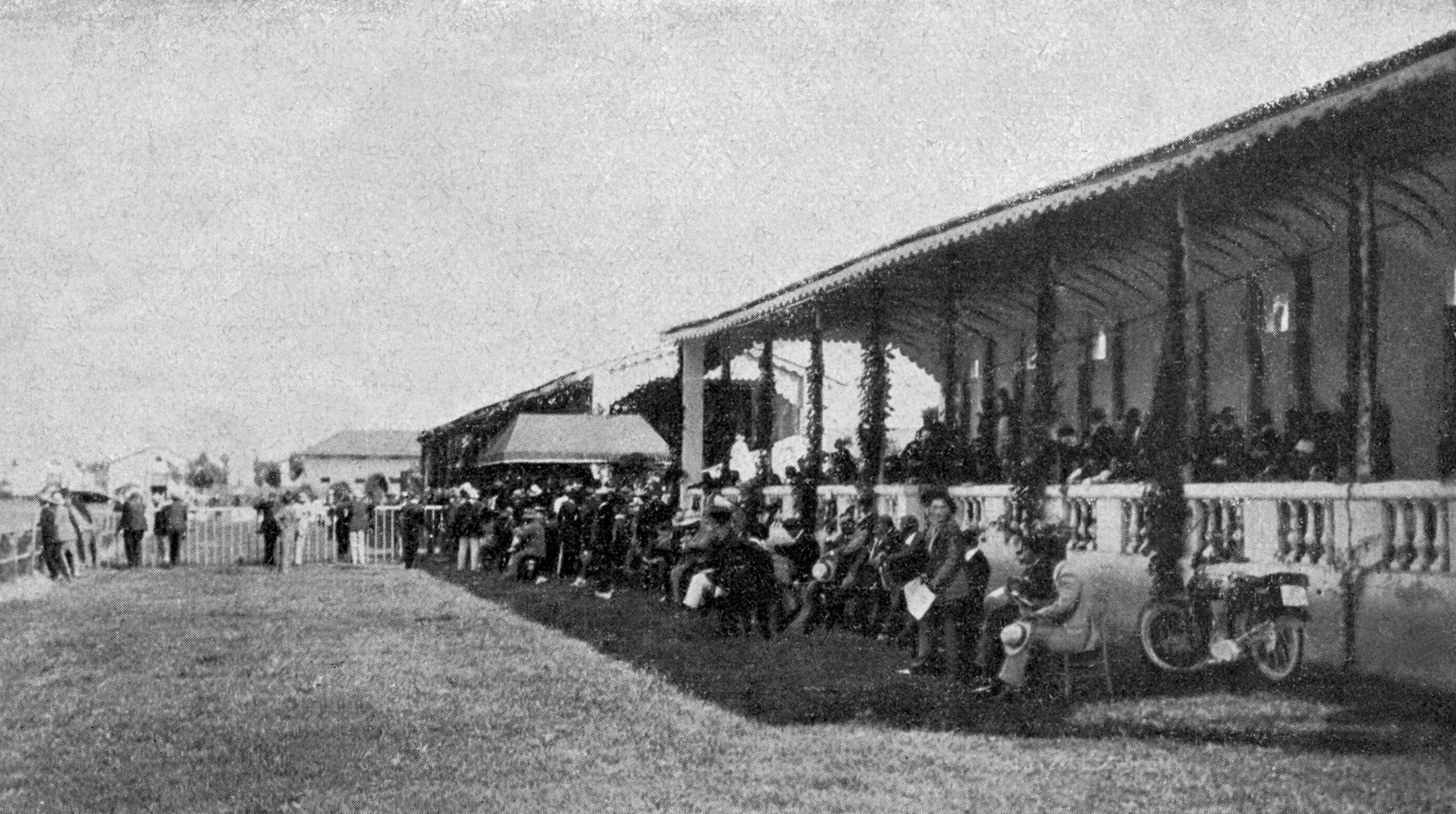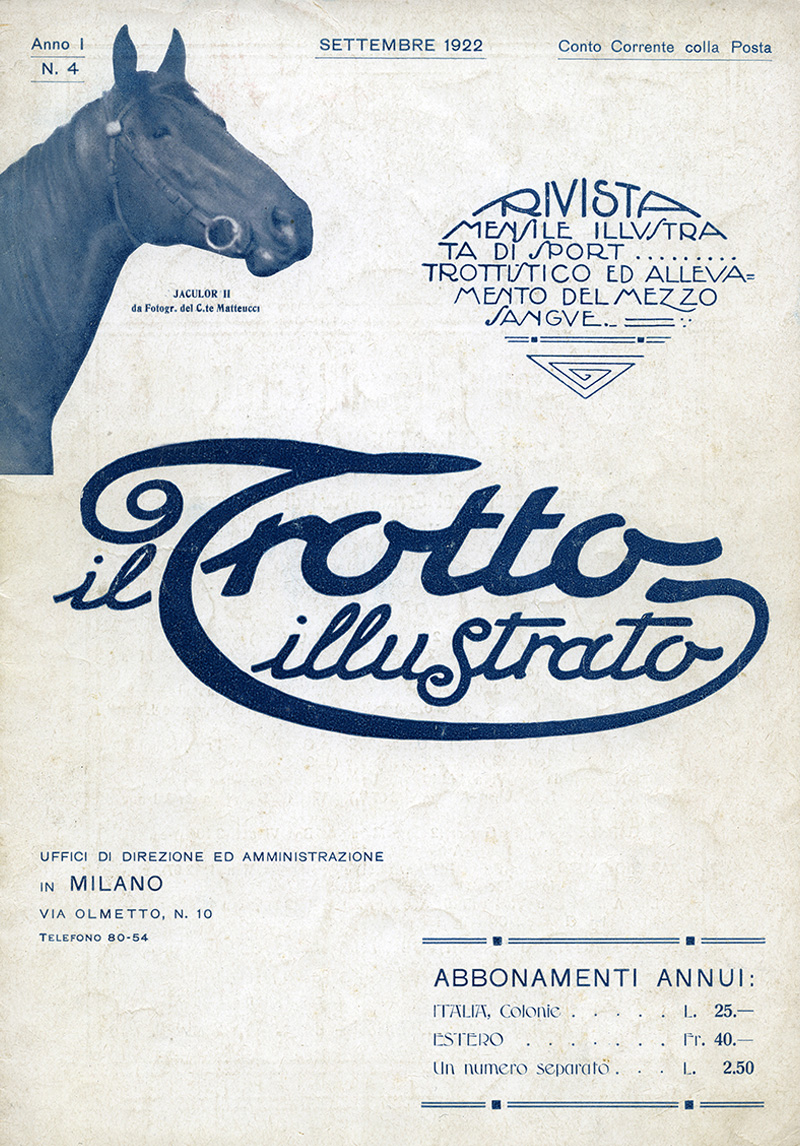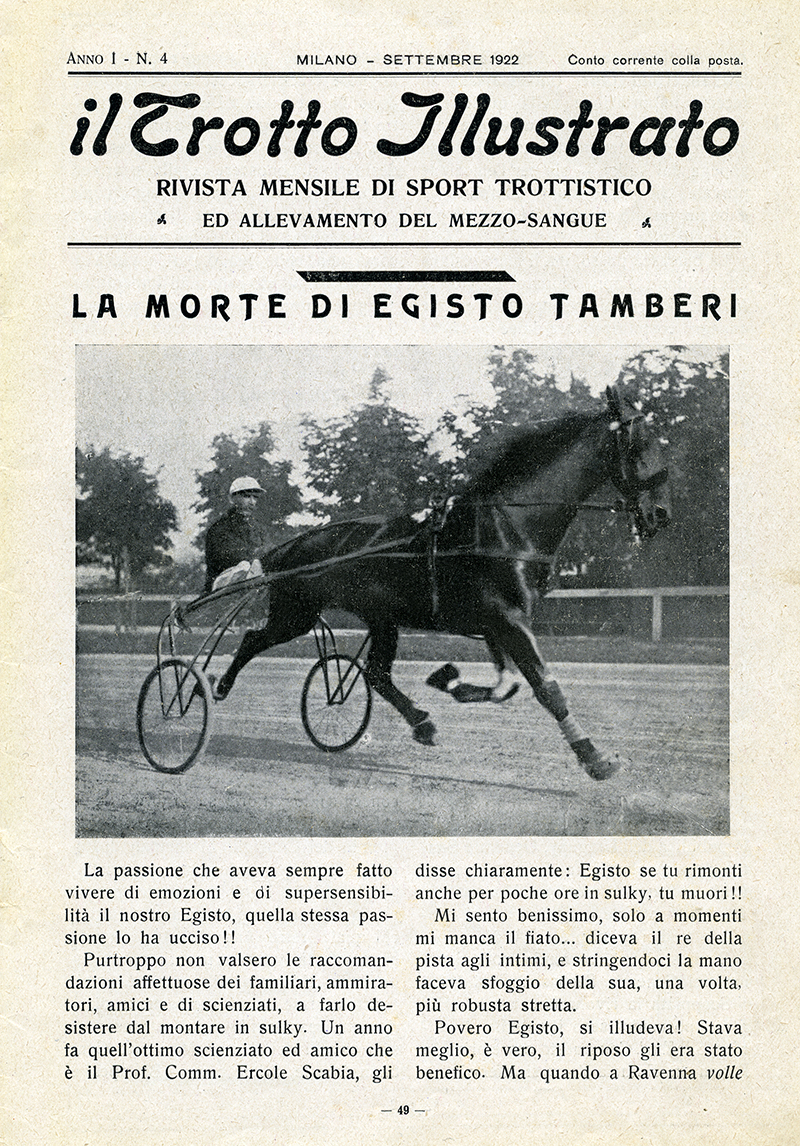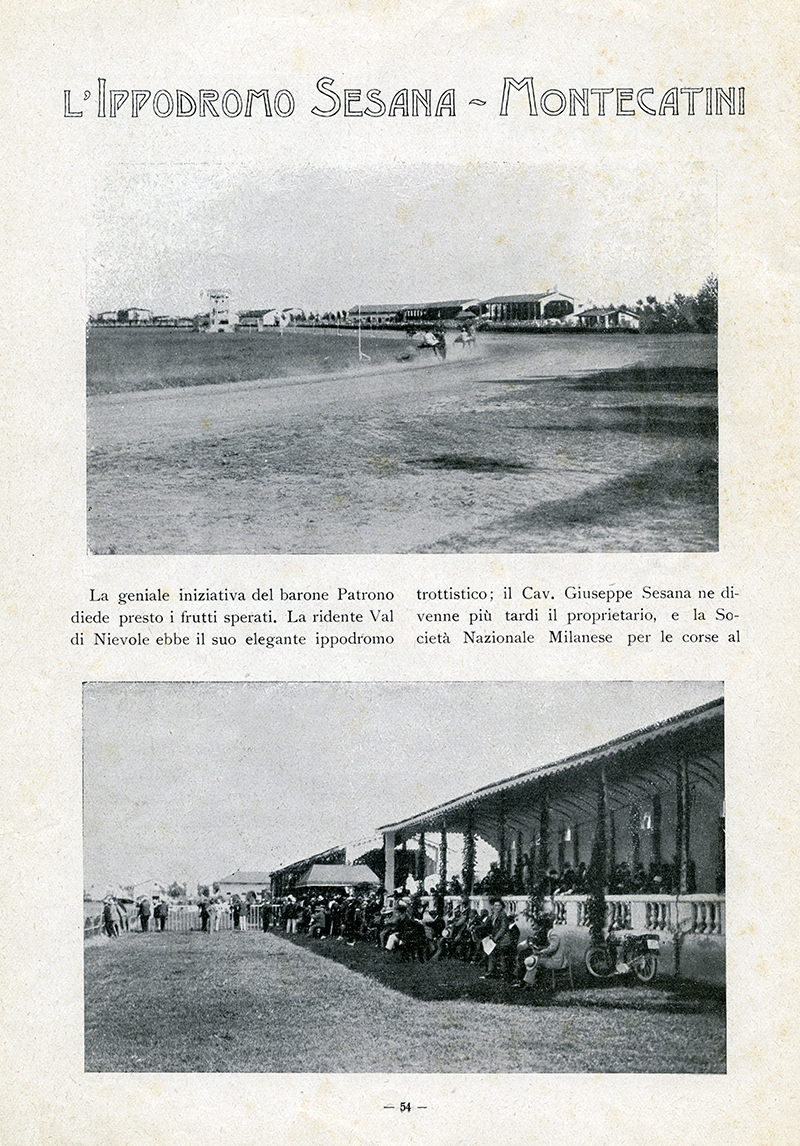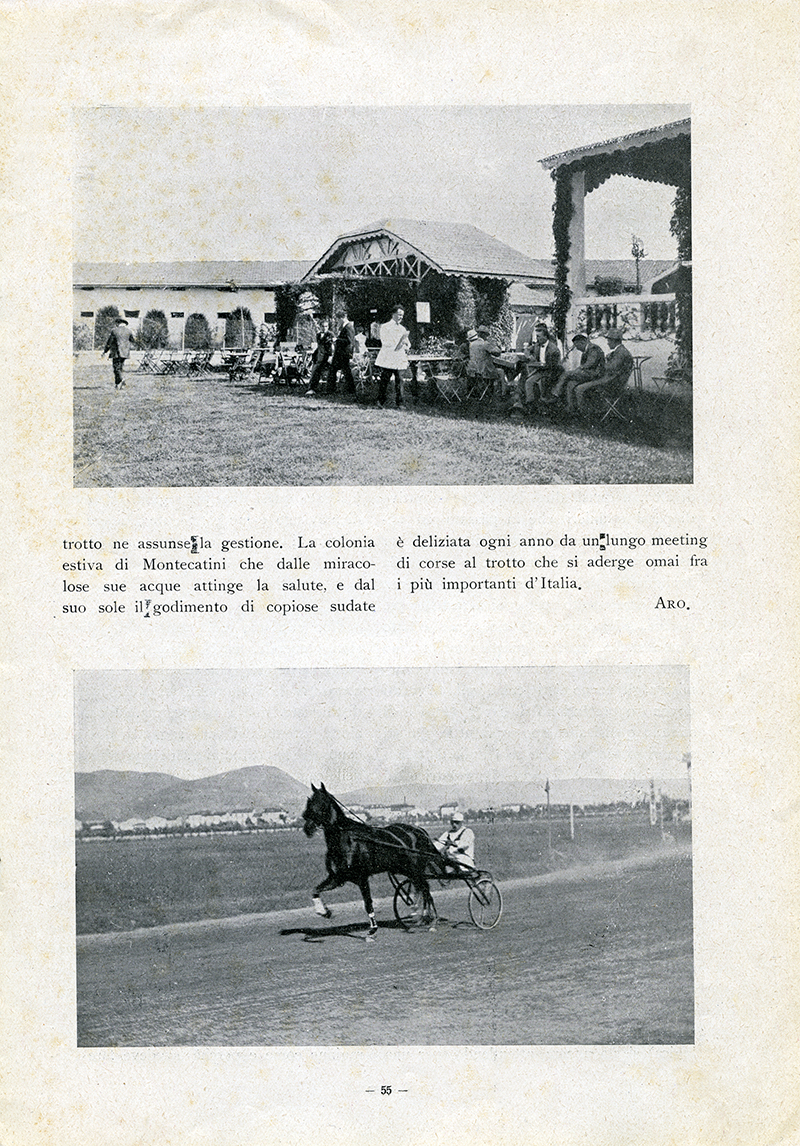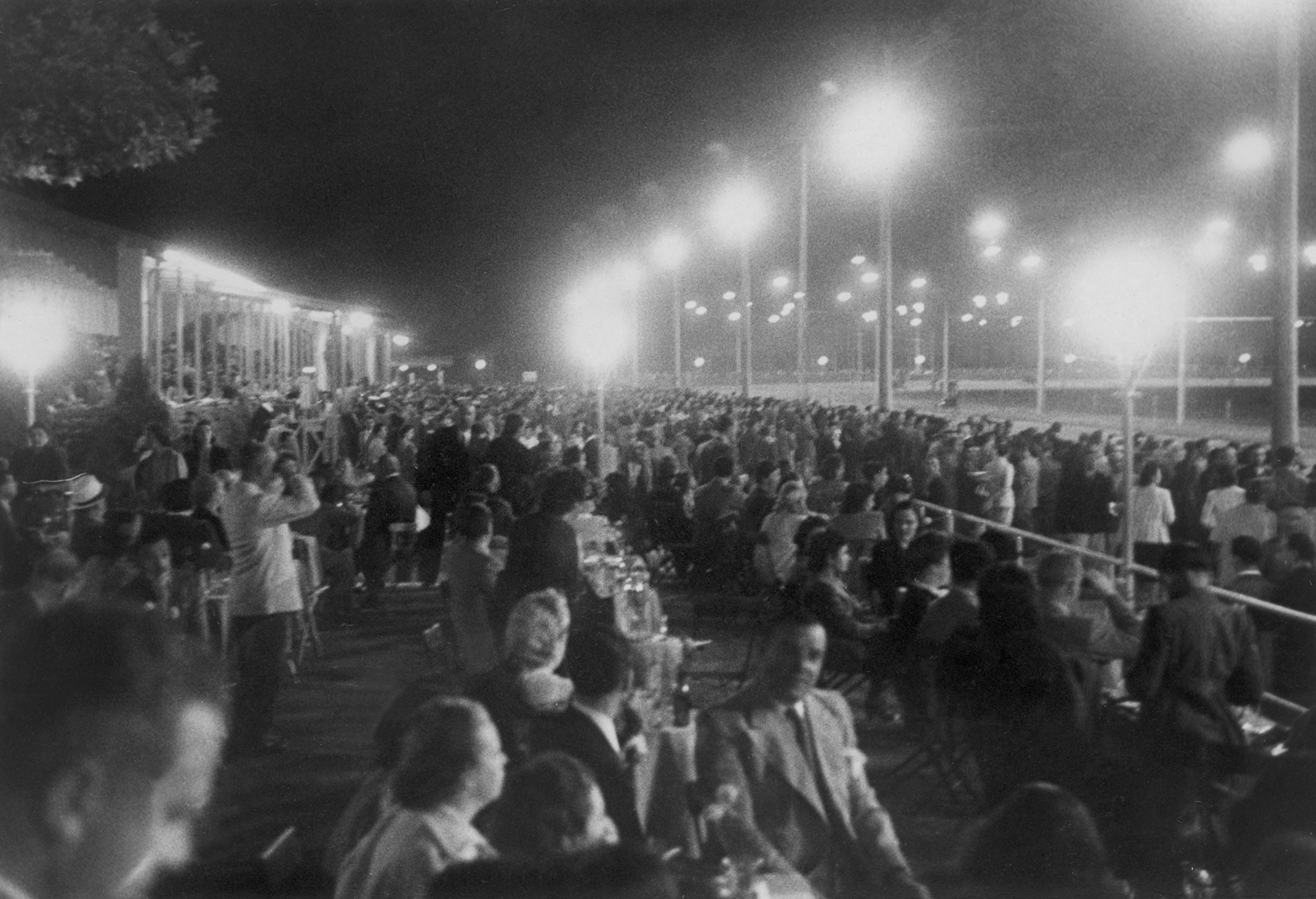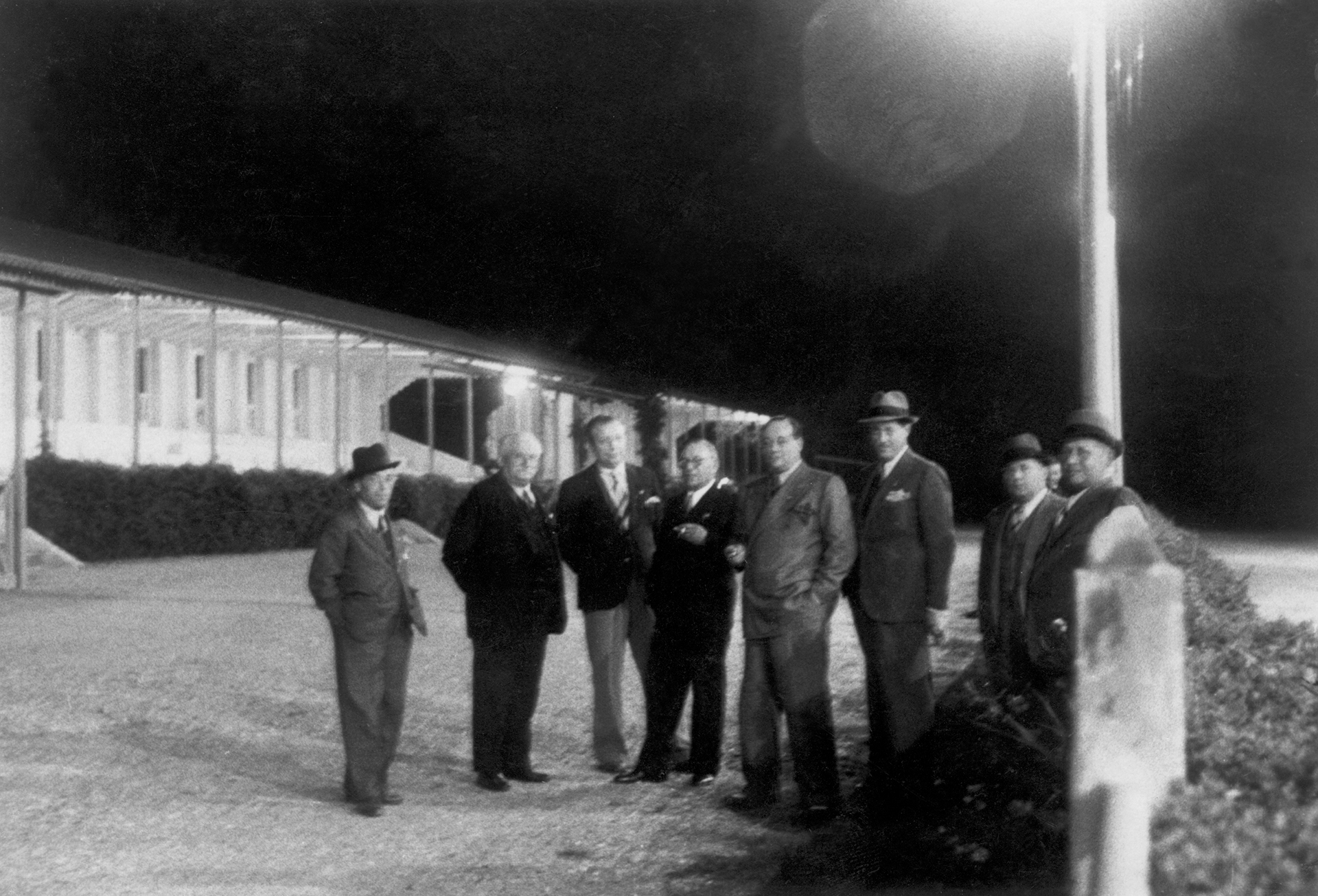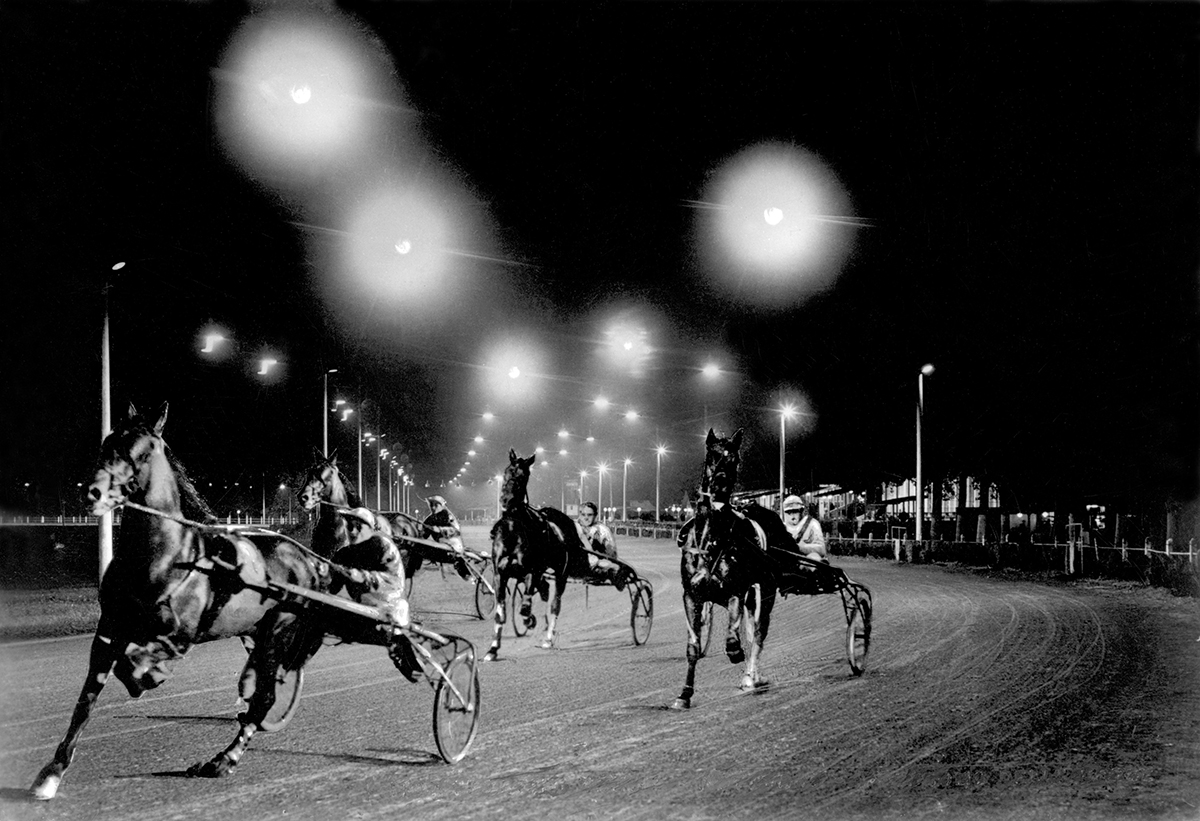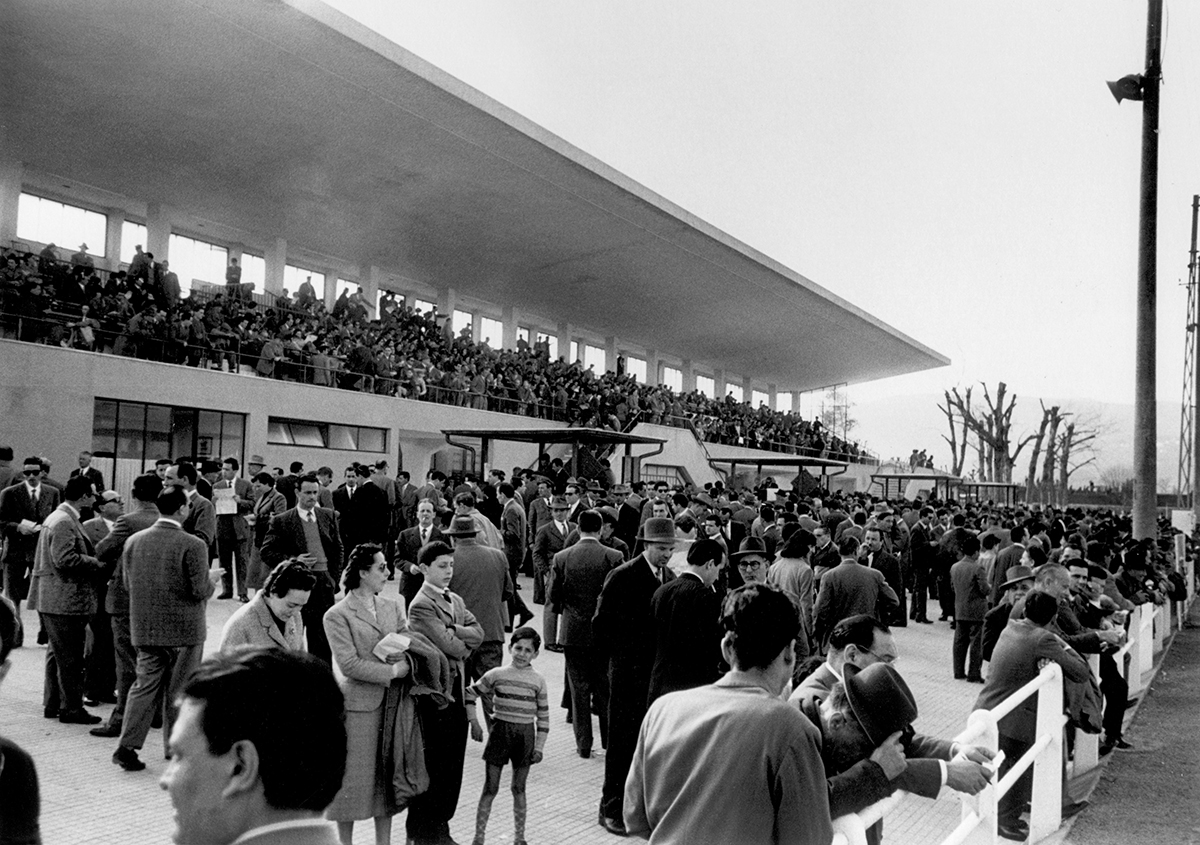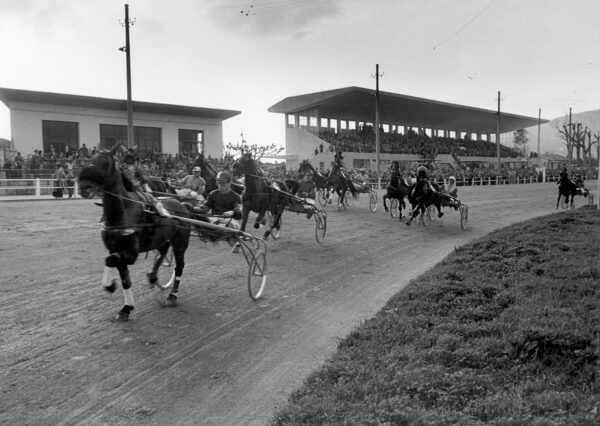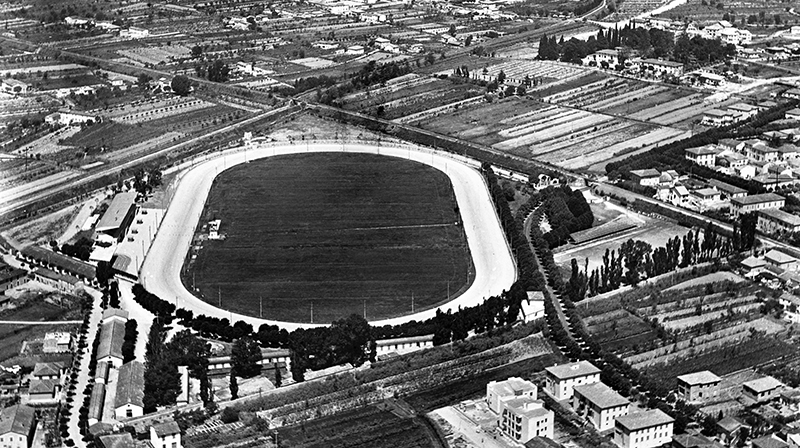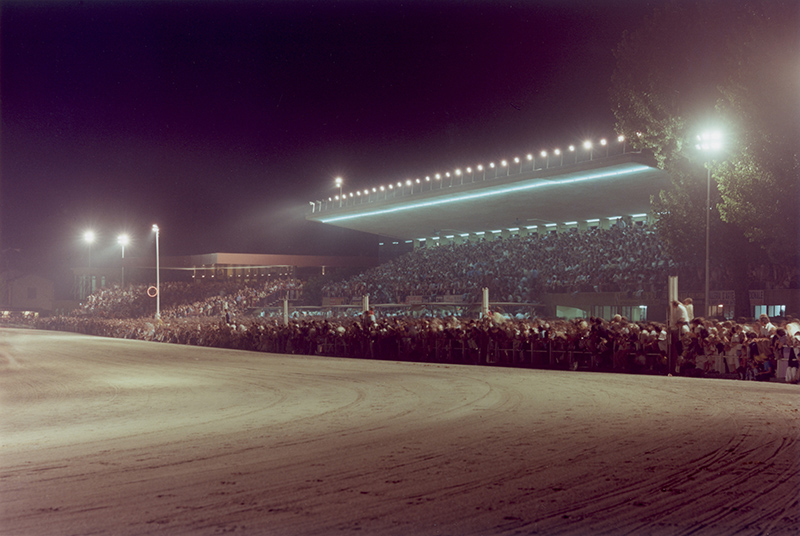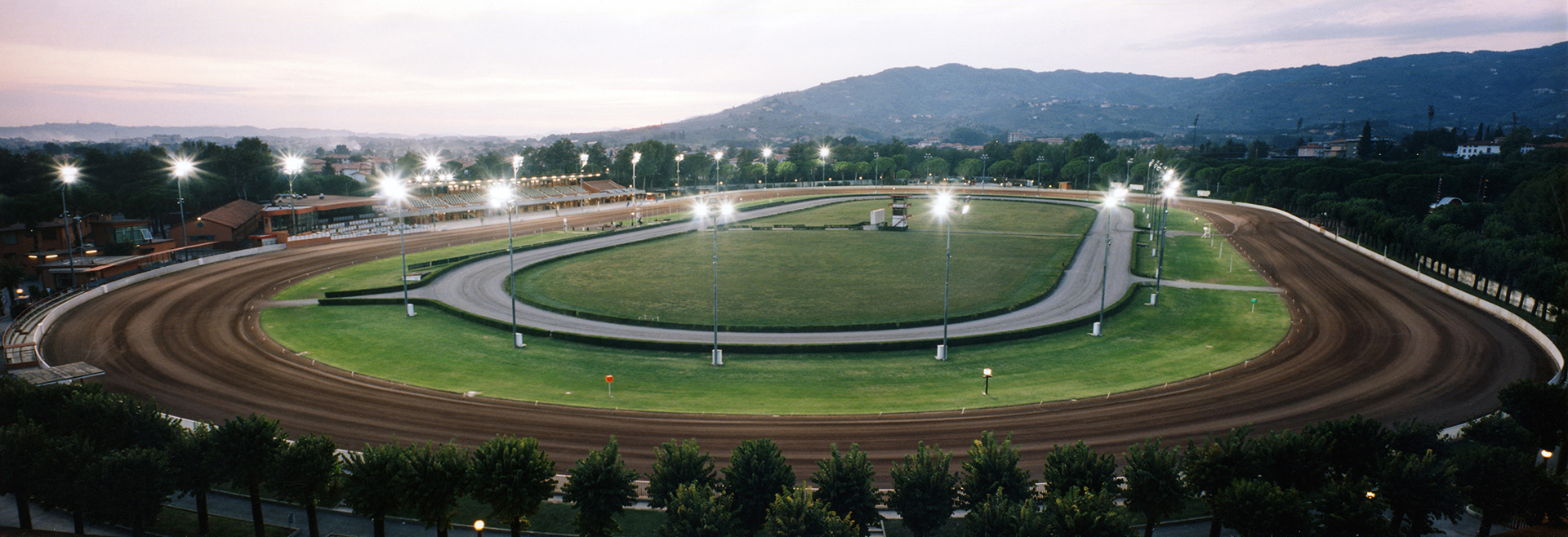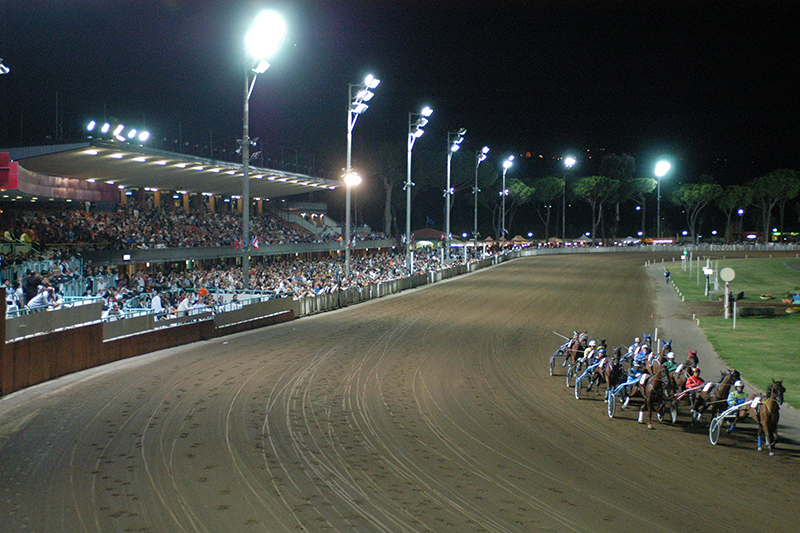Since the end of the 19th century, San Siro’s gallop and harness racing courses have played a key role in the history of national horse racing and in particular of the city of Milan. The Milanese nobles’ will, efforts and passion for racing led to the success of this sport.
The first horse races were established in the early 19th century, in the Milanese area of Corso Buenos Aires and Piazza D’Armi, as well as in Castellazzo di Rho, Casbeno and Varese. Following their great success, the need arose to establish institutions that could organise the races with a suitable schedule. On 1 January 1883, the Lombard Society for Horse Racing (“Società Lombarda per le corse dei cavalli”) was established. A few years later, it rented land in the San Siro area and inaugurated the first San Siro Racecourse.
Presidents of the Lombard Society for Horse Racing in Milan: Count Gian Pietro Cicogna Mozzoni (1883-1884), Duke Ludovico Melzi d’Eril (1885-1887), Prince Gian Giacomo Trivulzio (1887-1898).
© San Siro Racecourses Archive
The large turnout of spectators at the old Castellazzo track forced the Lombard Society to adopt a new solution closer to central Milan. The architect Giulio Valerio was entrusted with designing a racecourse at San Siro, which was inaugurated in May 1888. Shown here: the weighing enclosure.
© San Siro Racecourses Archive
The world of horse racing was buzzing: in 1906 the President of the Society, Emilio Turati, established with the members of the board the Trenno Racecourse Limited Company (“Società Anonima dell’Ippodromo di Trenno”), with the aim of expanding the equestrian complex and equipping it with facilities suitable for both harness racing and galloping, as well as land for breeding and training.
© San Siro Racecourses Archive
The success achieved by the construction of the first racecourse increased the desire to create a larger facility that could also host international shows. In 1911 a competition was announced for a masonry project to meet the new structural requirements. The project was won by the architects Vietti Violi and Arrigo Cantoni, who began work in 1914 but were forced to interrupt it the following year when Italy entered the war. The new San Siro Racecourse was completed at the end of the Great War in 1919. That same year the Trenno Racecourse Limited Company changed its name to Trenno Limited Company (“Società Anonima Trenno”). The Lombard Society also changed its name to Society for the Encouragement of Equine Breeds (“Società di Incoraggiamento delle Razze Equine”, SIRE), which extended its action nationwide.
“Instrument of 16 January 1919. Minutes of the Trenno Racecourse shareholders’ meeting”. The document includes the proposal to change the name from Trenno Racecourse Limited Company to Trenno Company.
© San Siro Racecourses Archive
“Society for the Encouragement of Equine Breeds in Italy. Minutes of the Governing Board” (1928-1935). The session of 10 March 1928, among the amendments to the articles, acknowledged the change from Lombard Society for Horse Racing to SIRE in 1919.
© San Siro Racecourses Archive
On 25 April 1920, around 10,000 people entered the gates of the new San Siro Racecourse. It was a varied audience from all walks of life, though divided into the various access areas. The three grandstands, the large botanical park and the five racetracks suitable for any type of course gave the city of Milan one of the grandest racecourses in Europe.
Racecourse entrance.
© San Siro Racecourses Archive
Weighing grandstand.
© San Siro Racecourses Archive
Weighing and management building.
© San Siro Racecourses Archive
View from the weighing building.
© San Siro Racecourses Archive
Secondary grandstand
© San Siro Racecourses Archive
The grandstands
© San Siro Racecourses Archive
Harness races appeared in Italy at the start of the 19th century as a provincial event, arousing general excitement at the time of fairs or patron saint festivals. This type of racing was initially not taken into consideration in Milan, even though “horses harnessed to the gig”, chariots and pairs, performed at the Arena on the occasion of the May festivals, with amateur drivers. The first true harness races took place in Piazza delle Armi and can be traced back to 1862. Like gallops, harness racing also had the need to establish its own regulation racecourse. In 1892 the “Il Trotter” facility was inaugurated in Piazza Andrea Doria and followed by considerable development of the entire sector, including journalism. Although harness races did not yet have the support and organisation of gallops, thanks to Vandalo’s performance such a crowd showed up the next time at the Arena that ticket sales were suspended.
© San Siro Racecourses Library
Milan, Piazza d’Armi. Harness races with “gigs”.
© San Siro Racecourses Library
27 October 1892: inauguration of “Il Trotter” in Piazza Andrea Doria.
© San Siro Racecourses Library
In the wake of the success of harness racing, the first factory for sulkies with pneumatic wheels was built in Milan in 1893, and the first periodical dedicated entirely to trotters (the horses that competed in harness races) was published: “Il Trotto”.
© San Siro Racecourses Library
On 2 November 1905, a new facility for harness races (a half-mile track with many stalls and grandstands) was inaugurated: the Trotter di Turro.
© San Siro Racecourses Library
It was following a visit to the gallop racecourse in Milan that Mussolini enthusiastically asked the President of the SIRE to provide the city with a suitable facility for harness races. And so on 25 November 1925 San Siro’s first harness racing course was inaugurated, with horses from all over Europe arriving for the opening race. The facility was built in a few months, thanks to the technical direction of the engineers Valerio and Somaini for the track, and the architect Paolo Vietti Violi for the grandstands and stables.
The track of the first harness racing course seen from the grandstand.
© San Siro Racecourses Archive
The track of the first harness racing course. In the background is the San Siro Stadium undergoing renovation (1955).
© San Siro Racecourses Archive
© Private collection – San Siro Racecourses Archive
The driver, seated on his sulky, directs the horse inside the harness racing course through the car park: the stalls of the “Old San Siro” facility were no longer sufficient.
© Agenzia Giornalistica Italia – San Siro Racecourses Archive
Completed in 1977, the “new” San Siro occupied an area of 152,000 m², the track was 1 km long and the training track measured 900 m. The spectators were accommodated in 2 grandstands with 5,200 seats and there were more than 500 stalls for horses. It was a great success, so much so that 140 days of racing were held in 1988.
© San Siro Racecourses Archive
During the work, the races continue! The horses are on the track for training.
© Agenzia Giornalistica Italia – San Siro Racecourses Archive
During the work, the races continue.
© Agenzia Giornalistica Italia – San Siro Racecourses Archive
During the work, the races continue.
© San Siro Racecourses Archive
The “new” harness racing course: aerial view of the facility.
© San Siro Racecourses Library
Images of the complex after renovation and expansion: the track. In the background are the stables.
© San Siro Racecourses Archive
Images of the complex after renovation and expansion: the stables area.
© San Siro Racecourses Archive
Images of the complex after renovation and expansion: the stables area.
© San Siro Racecourses Archive
Also in Tuscany, at the end of the 19th century, trotting races took place in the town fairs and in the parades, but with the start of the 20th century the need was felt to organise the races more seriously, with the creation of a real official activity. Meanwhile, in those years of ferment, Monecatini Terme was becoming, in addition to a wellness centre of excellence in Europe, also a centre of fun and entertainment for the upper bourgeoisie. The great hotels and theatres were created, and a racecourse was an essential addition. In 1916, after 2 years of work, Baron Giuseppe Petrone and Commander Giuseppe Sesana created the Sesana Racecourse. Although the Great War had already begun, in Montecatini there was a sense of fun and the races did not stop.
1916 – Construction of the racecourse. Commander Sesana in the centre.
© Archivio Studio Fotografico Rossellini
15 August 1917 – Montecatini, Adlon and Ettore Barbetta
© Archivio Studio Fotografico Rossellini
1920 – Sesana Racecourse
© Archivio Studio Fotografico Rossellini
1922 – Audience at Sesana
© Archivio Studio Fotografico Rossellini
© Archivio Studio Fotografico Rossellini
In the 1930s, Commander Sesana took over the shares of the Racecourse, became its sole owner and began to dedicate himself to the improvement of the system, both from a structural and technical point of view and from the point of view of welcoming the public.
© Archivio Studio Fotografico Rossellini
In 1937, a new and modern lighting system of the track was installed, which would allow evening and night races to be held.
© Archivio Studio Fotografico Rossellini
During the period of World War II the Racecourse operated very little. There was some racing in the early 1940s, but it was closed in the hardest years of the conflict, until the great reopening in 1946.
© Archivio Studio Fotografico Rossellini
In 1949, the new SIRE property contacted the now-famous architect of sports facilities, Paolo Vietti Violi, who designed the reconstruction of the stands and bleachers, inaugurated a few years later, in 1953.
© Archivio Studio Fotografico Rossellini
© Archivio Studio Fotografico Rossellini
1950 – Aerial view of Sesana
© Archivio Studio Fotografico Rossellini
1977 – Stands at Sesana
© Archivio Studio Fotografico Rossellini
In the following years the Racecourse, and all of Montecatini, enjoyed years of glorious races, whose stars were the most famous horses in the history of trotting racing: from Delfo, ridden by Sergio Brighenti, to Tornese, Crevalcore, Wayne Eden, The Last Hurrà, and the world-famous Varenne.
© Archivio Studio Fotografico Rossellini
© Archivio Studio Fotografico Rossellini


